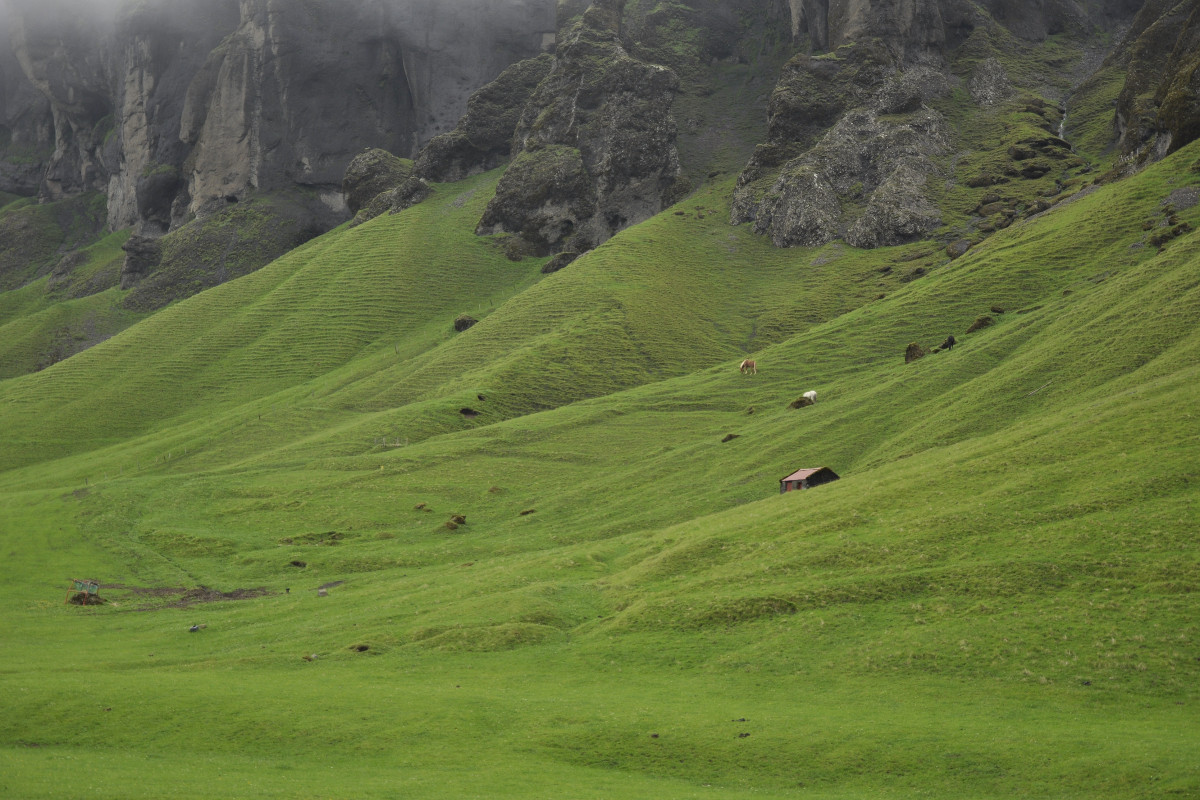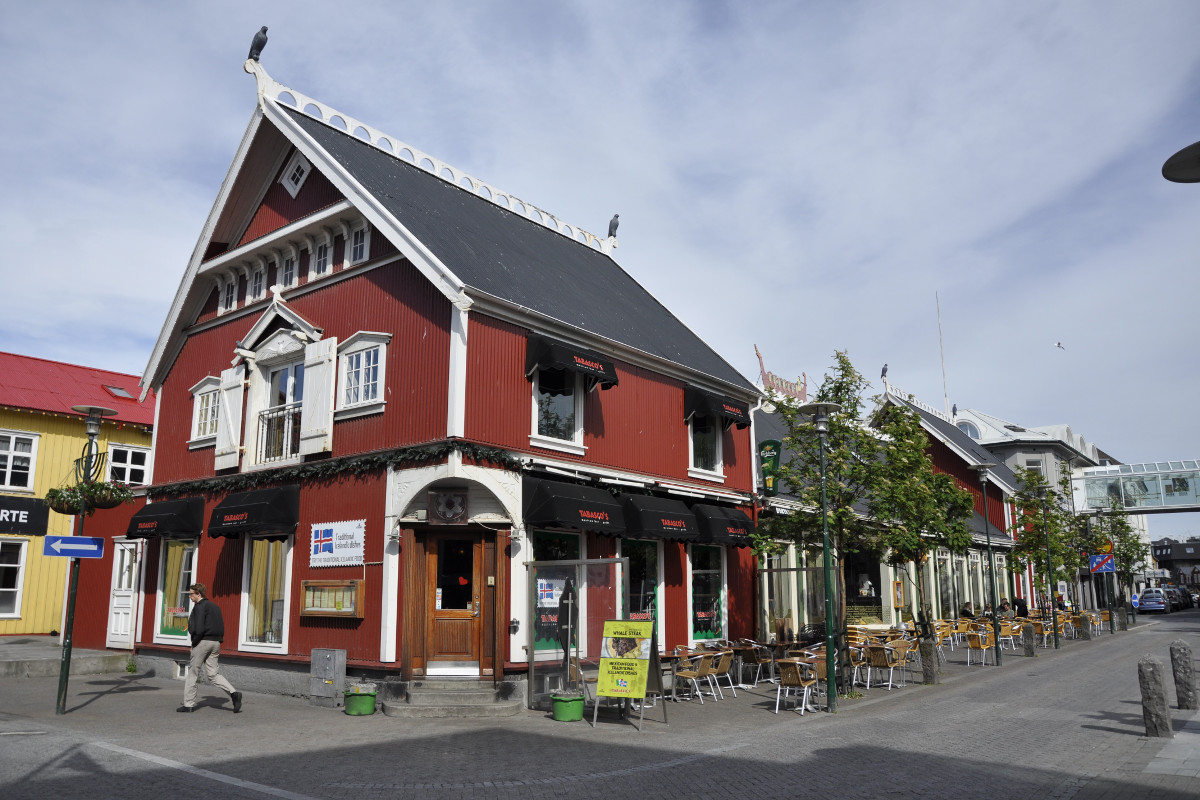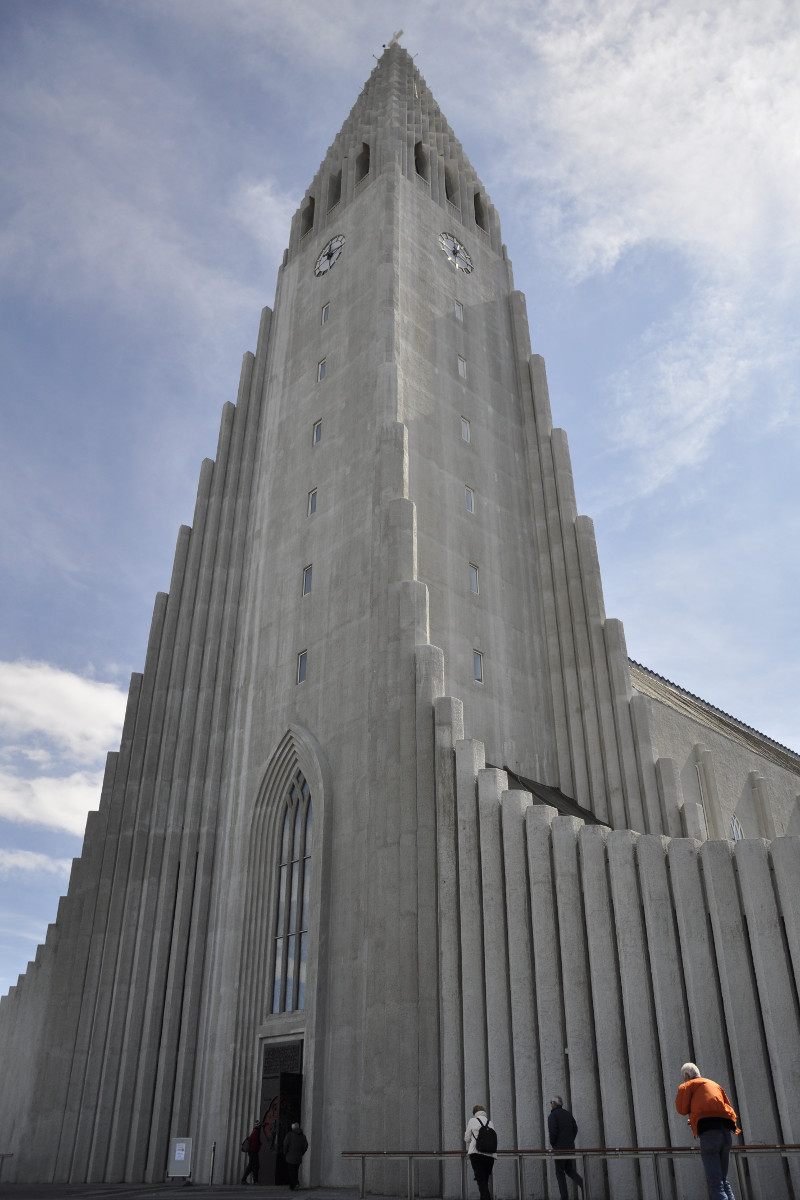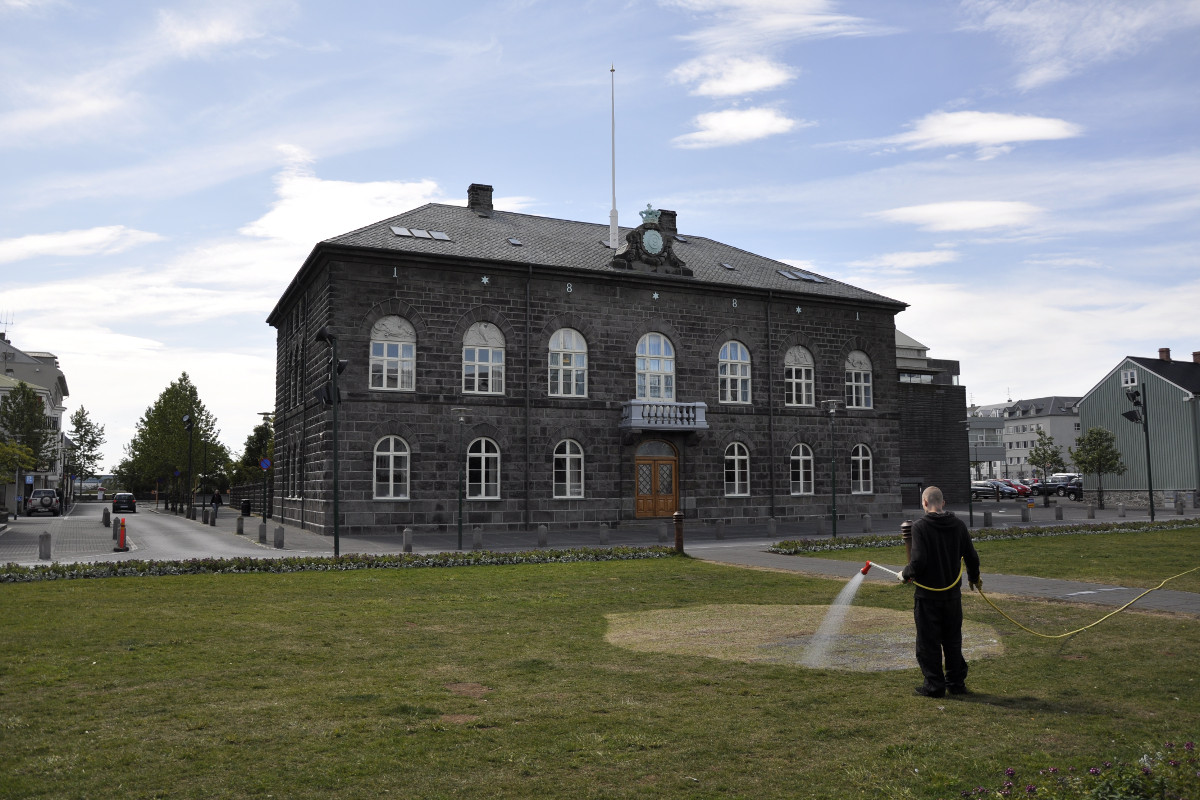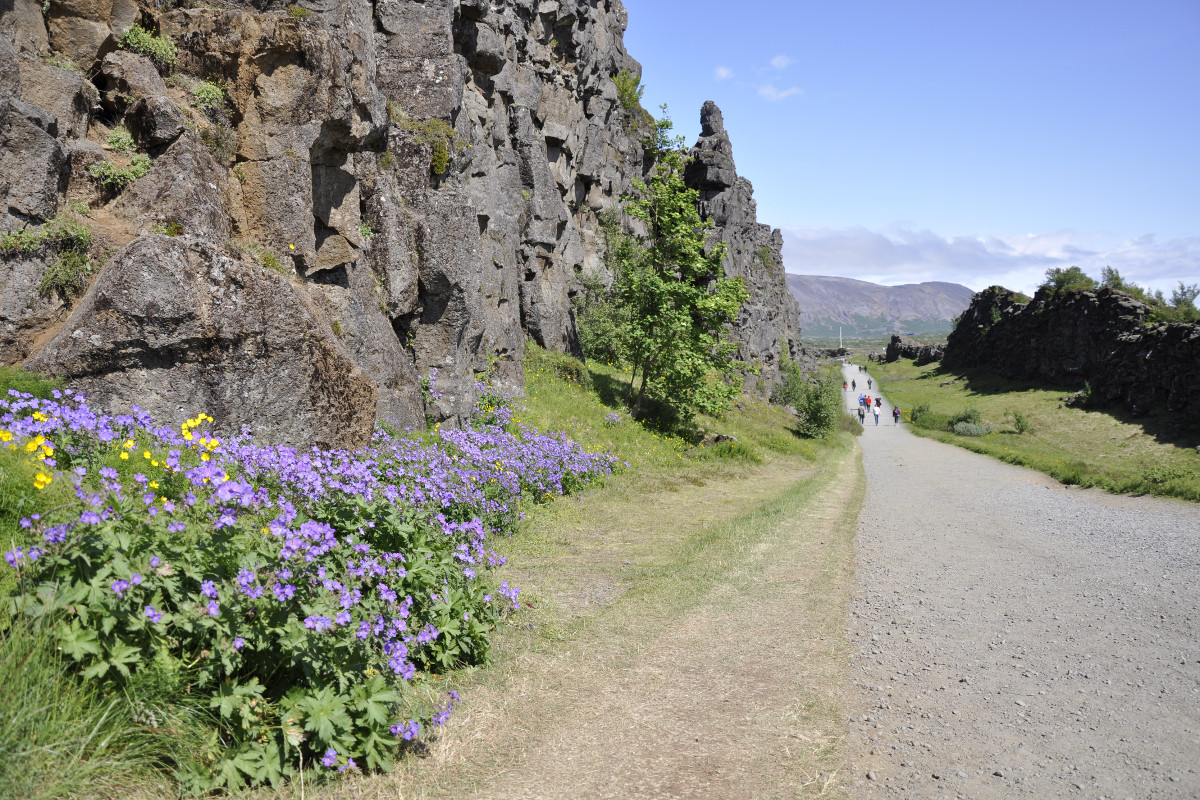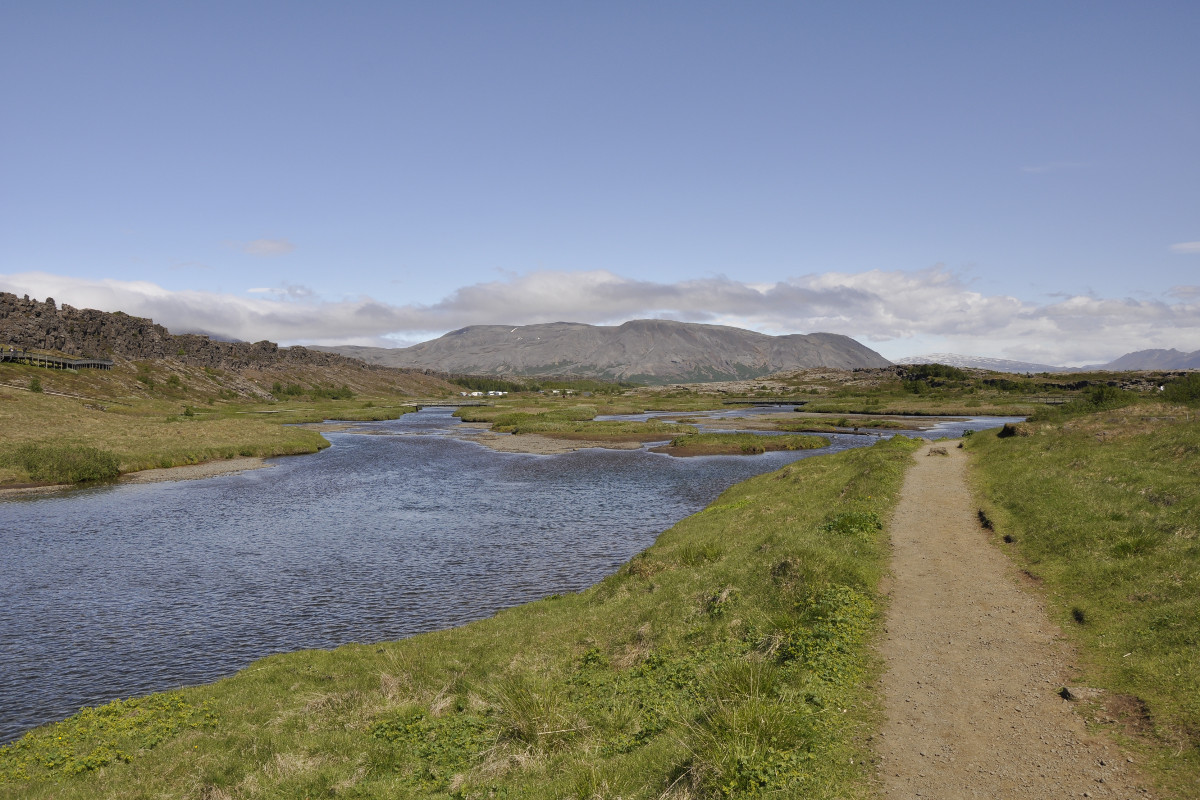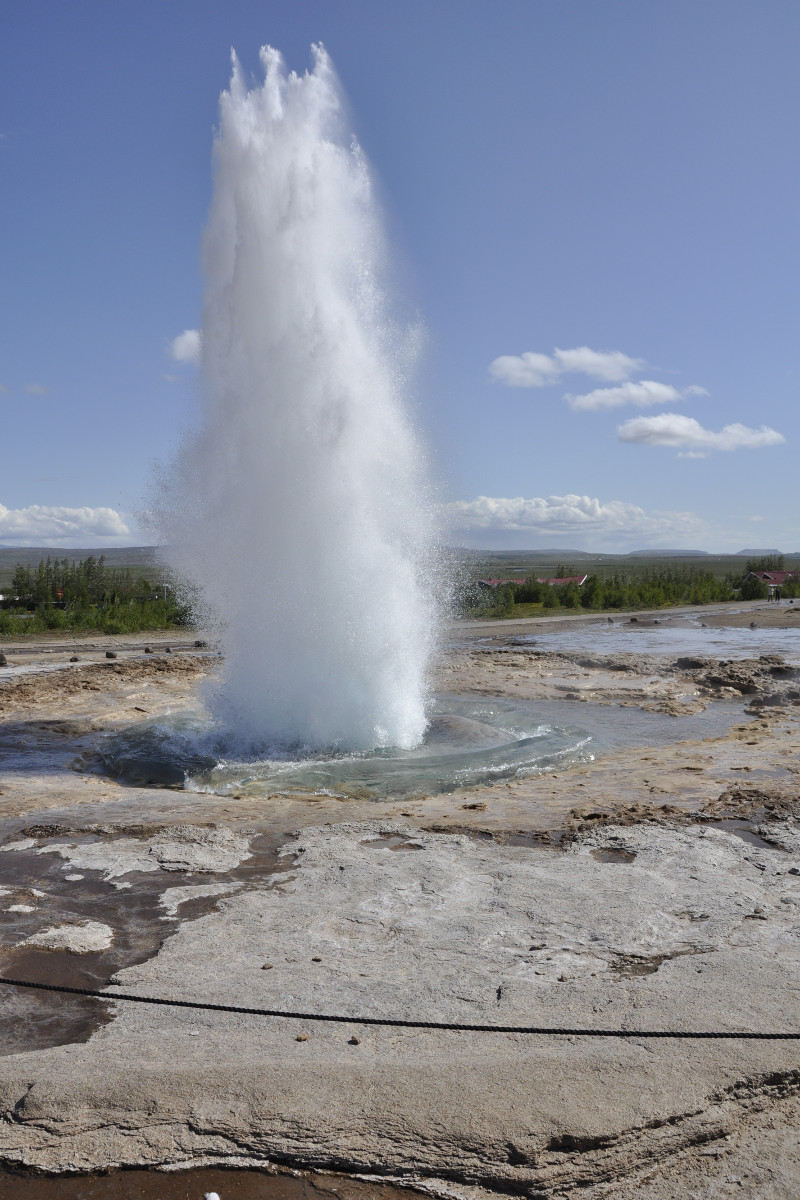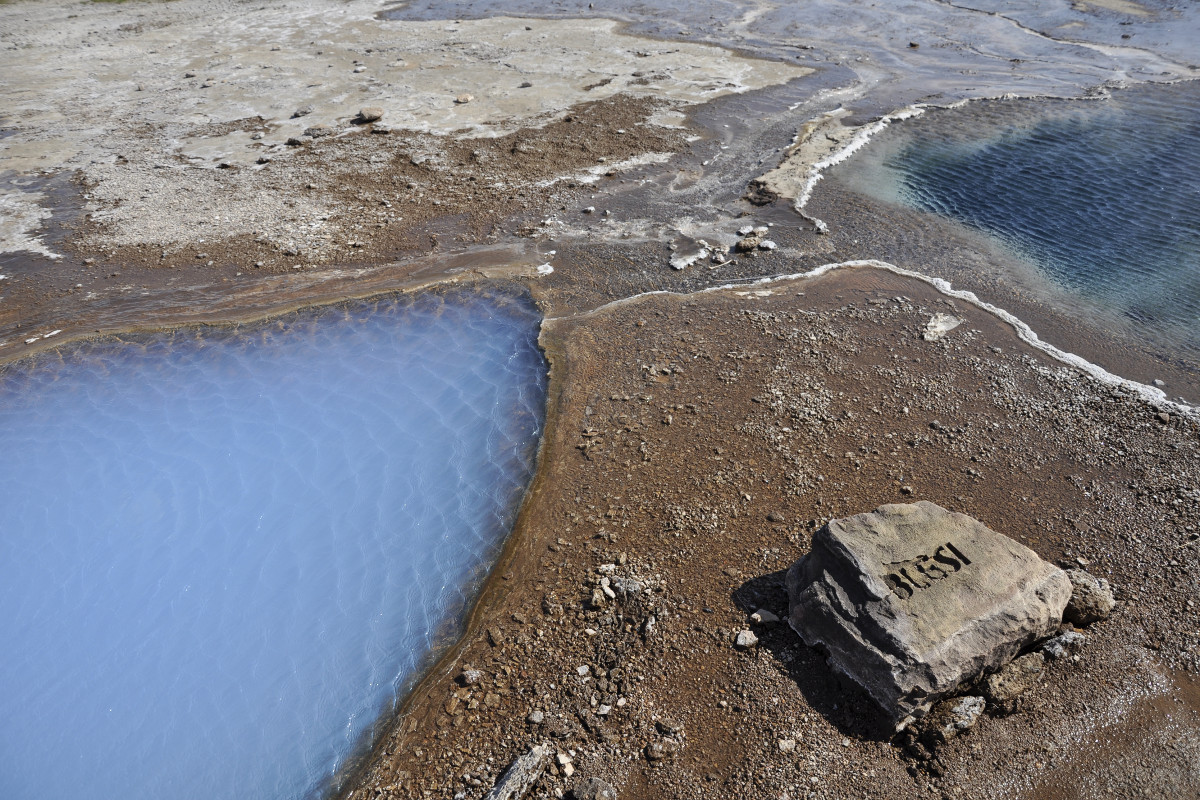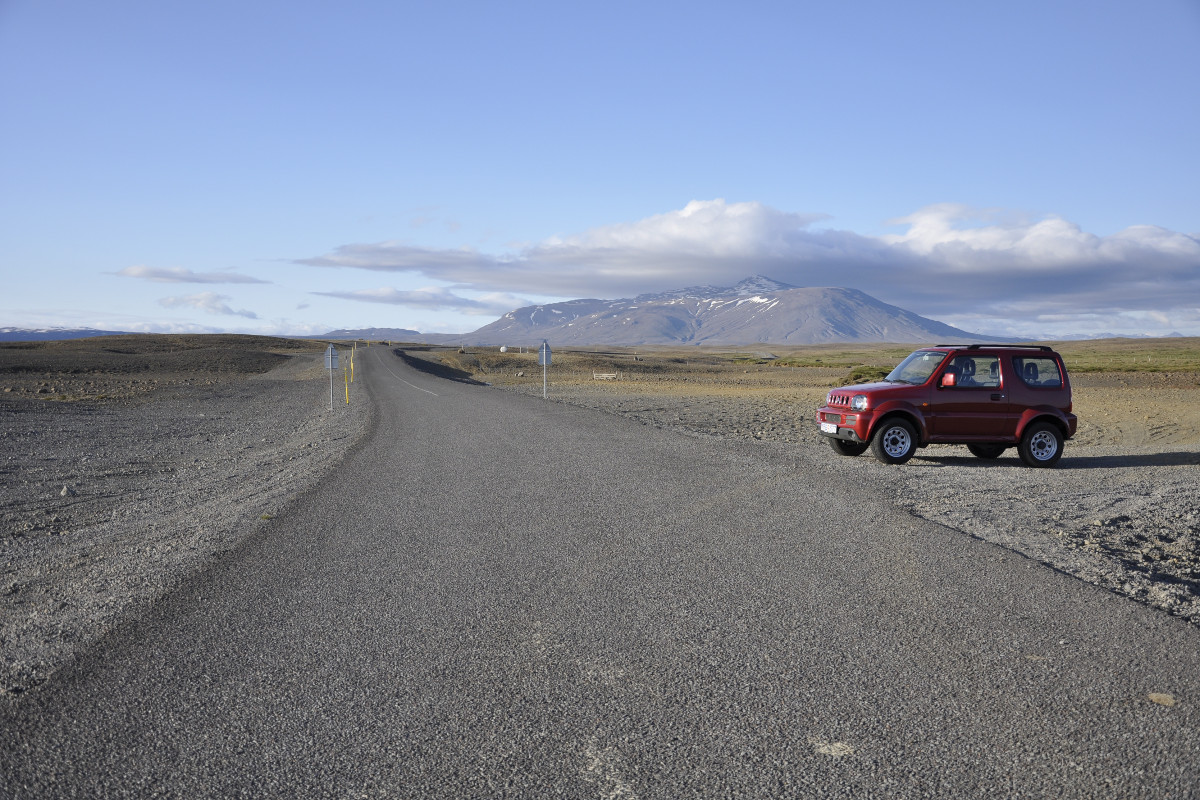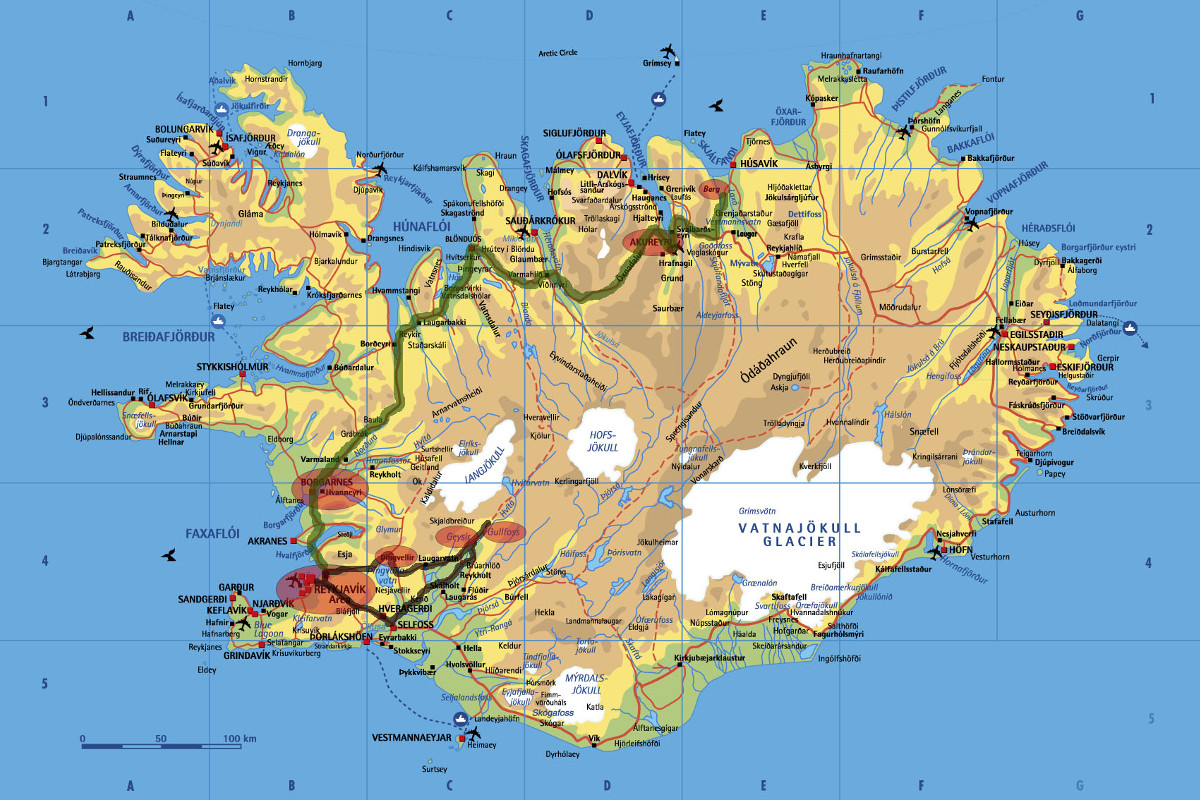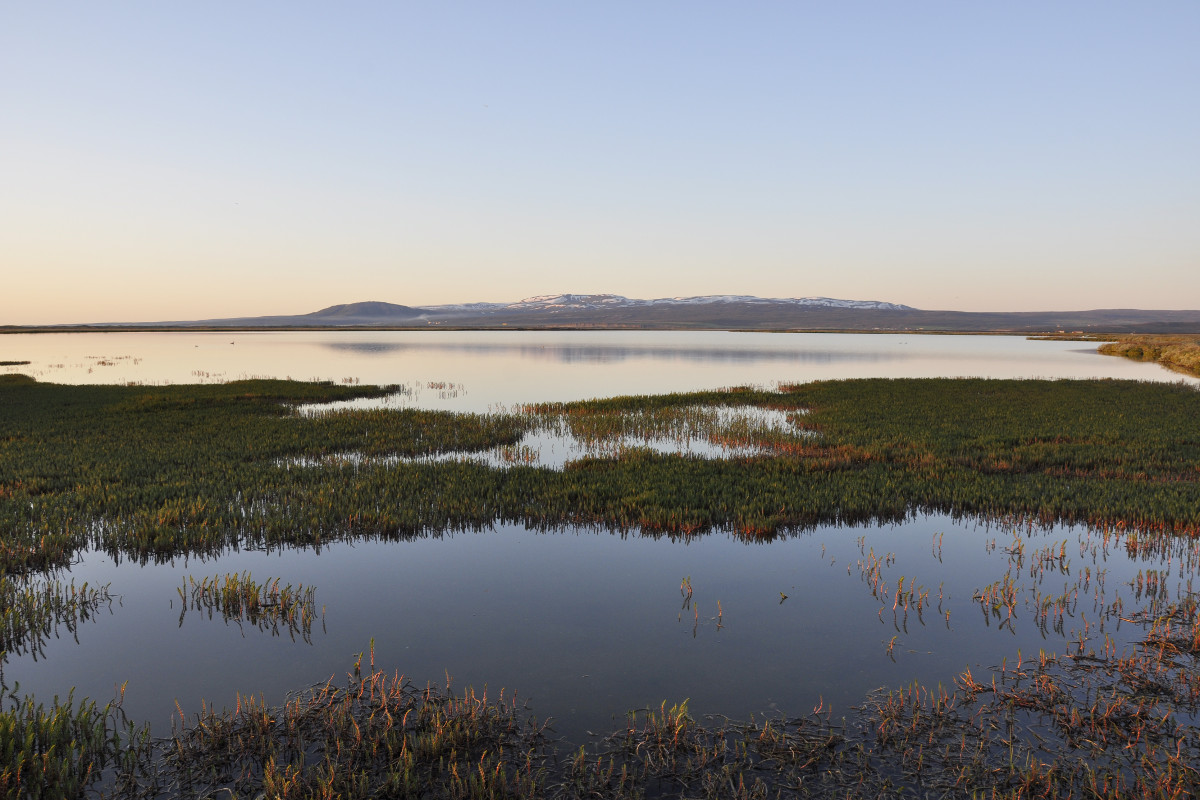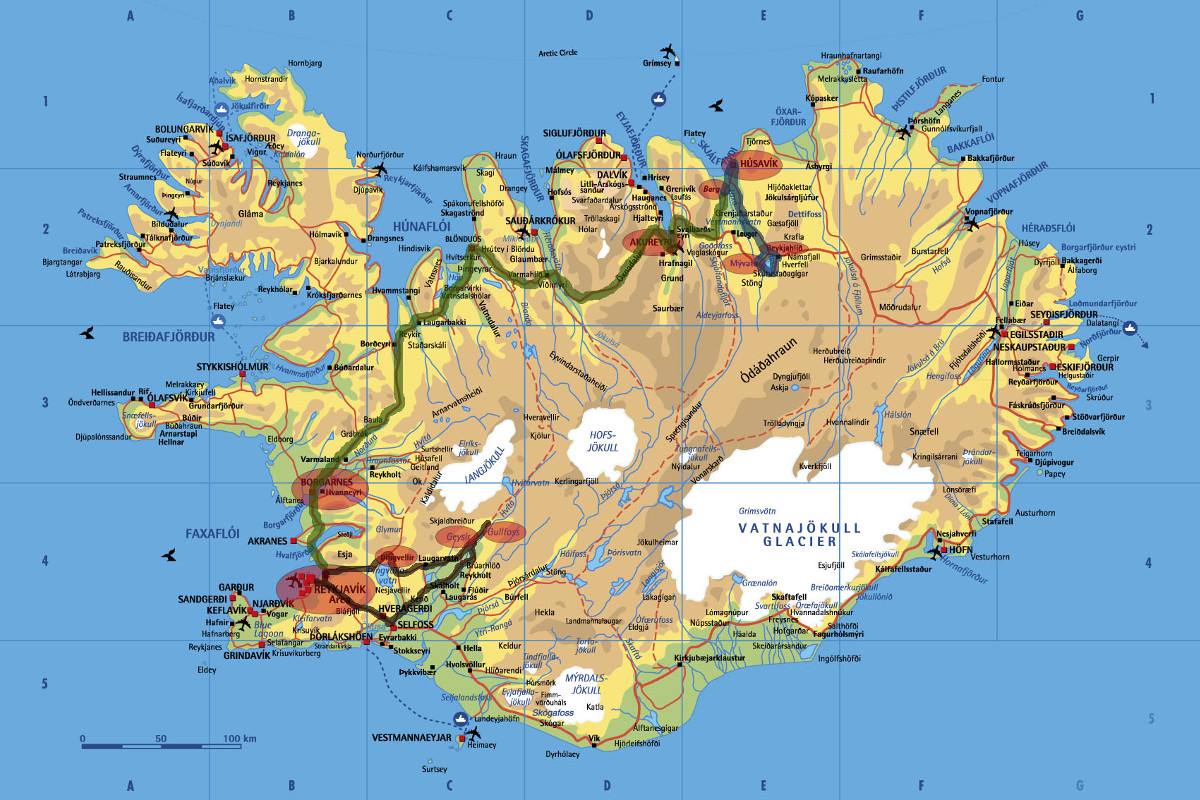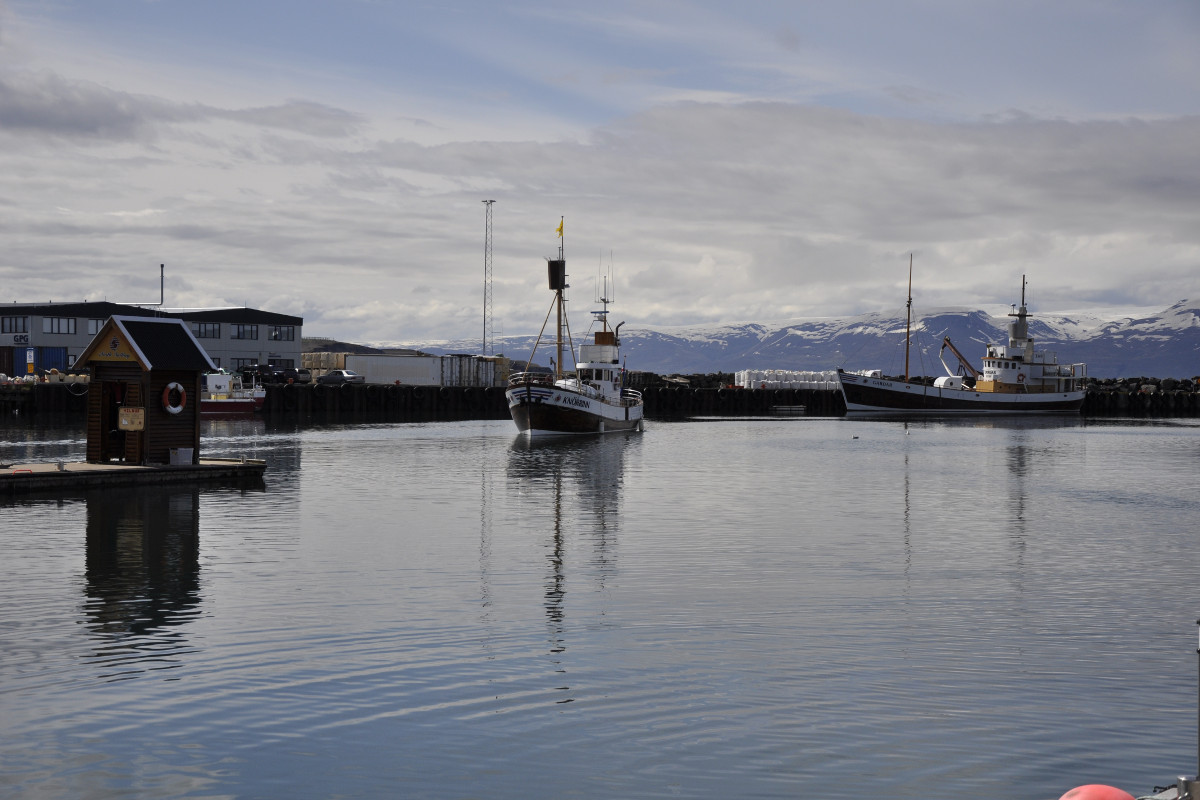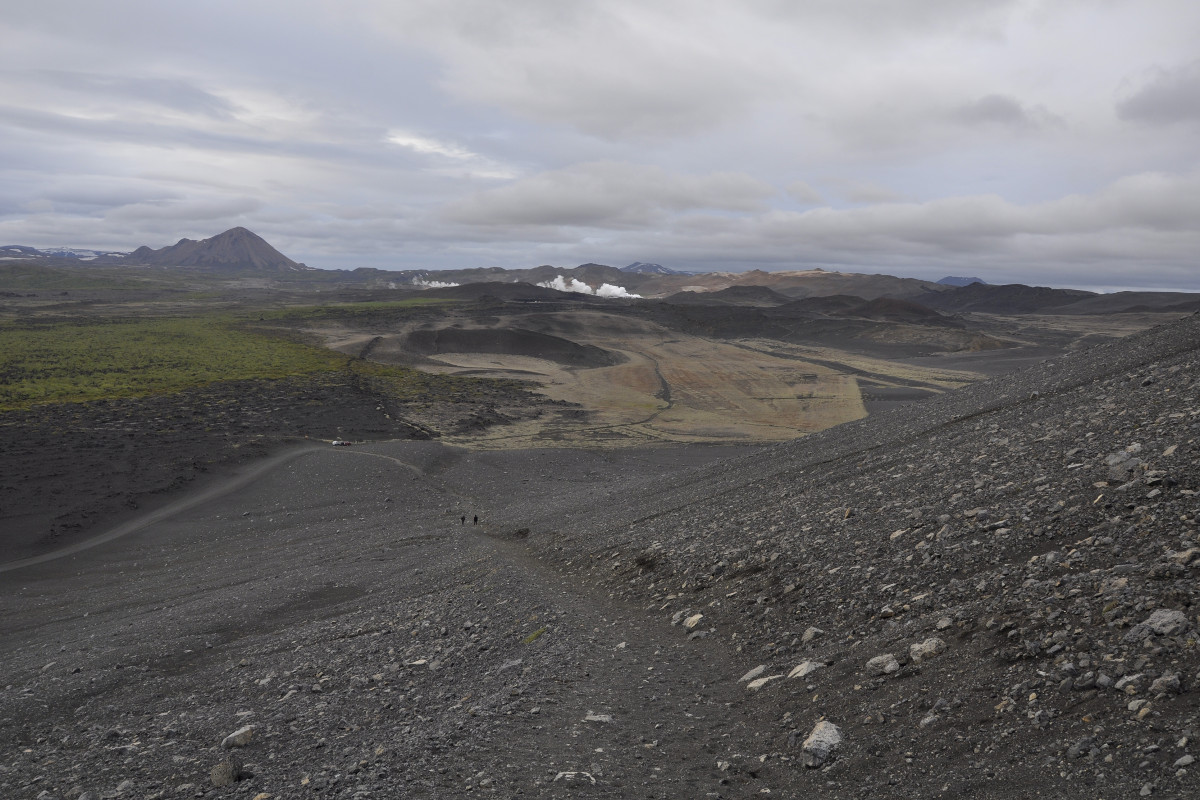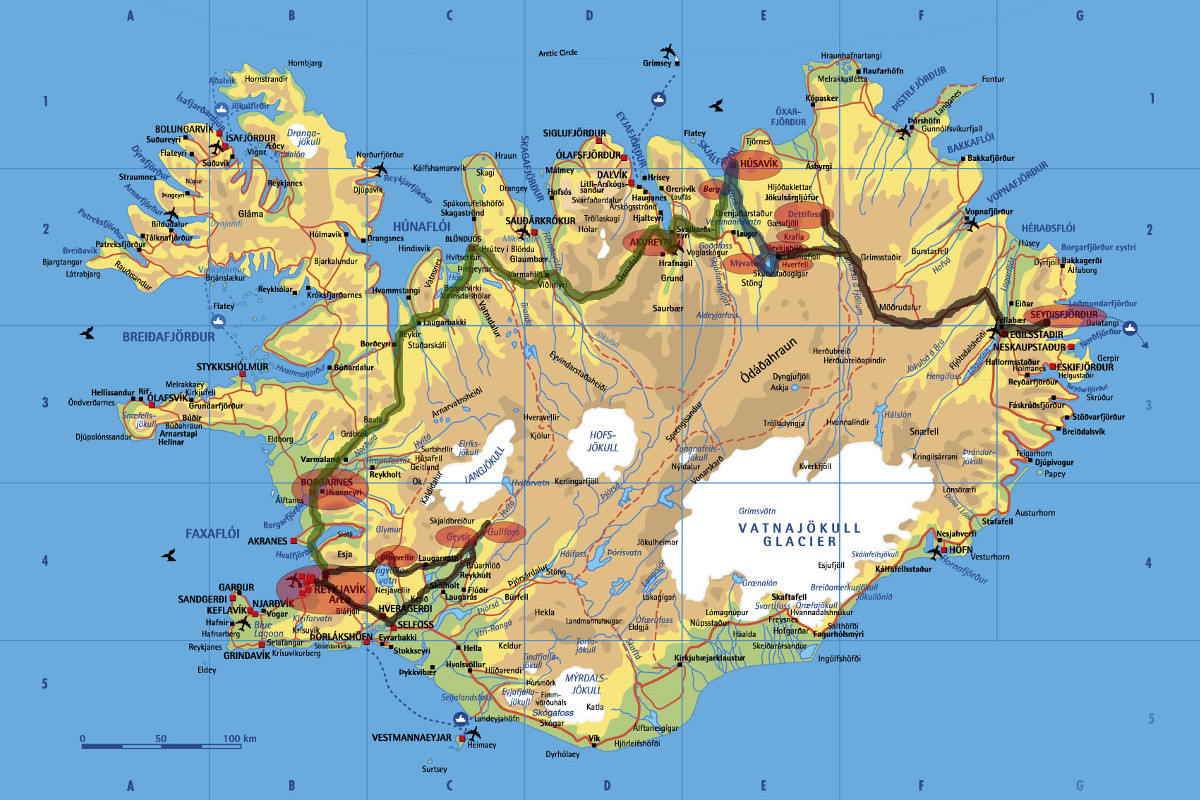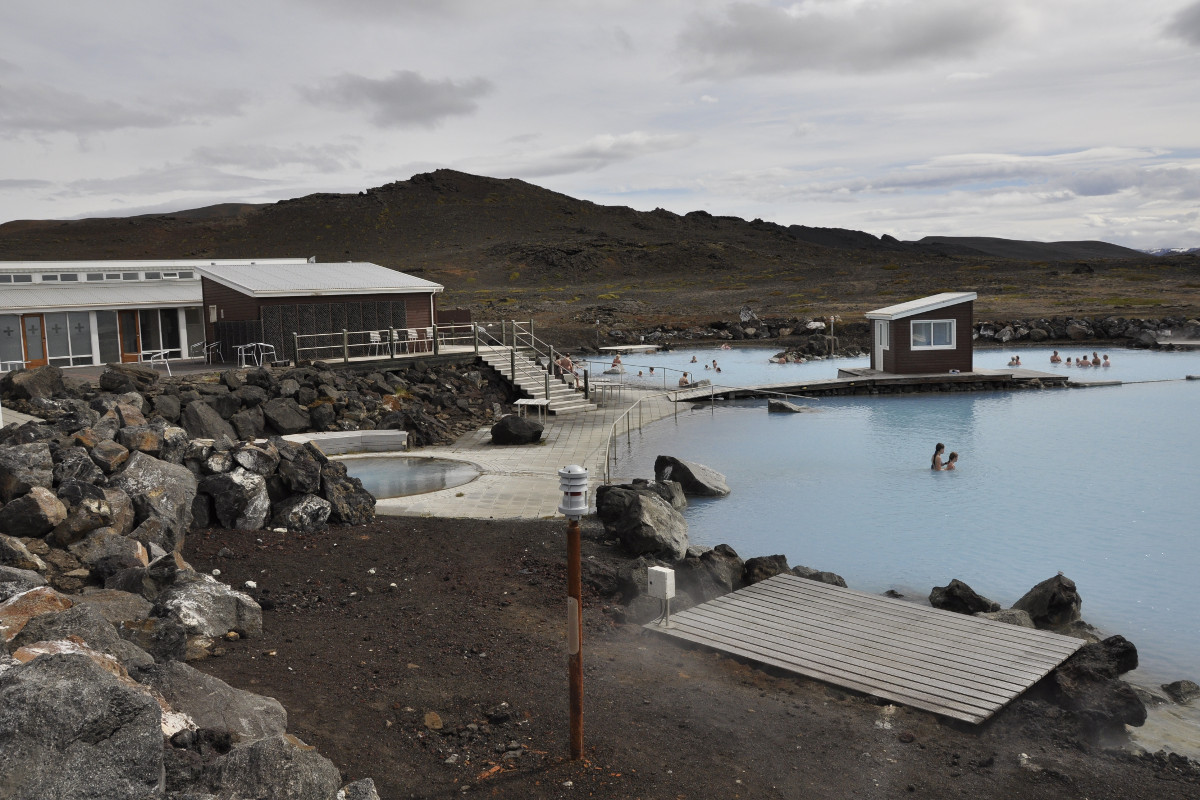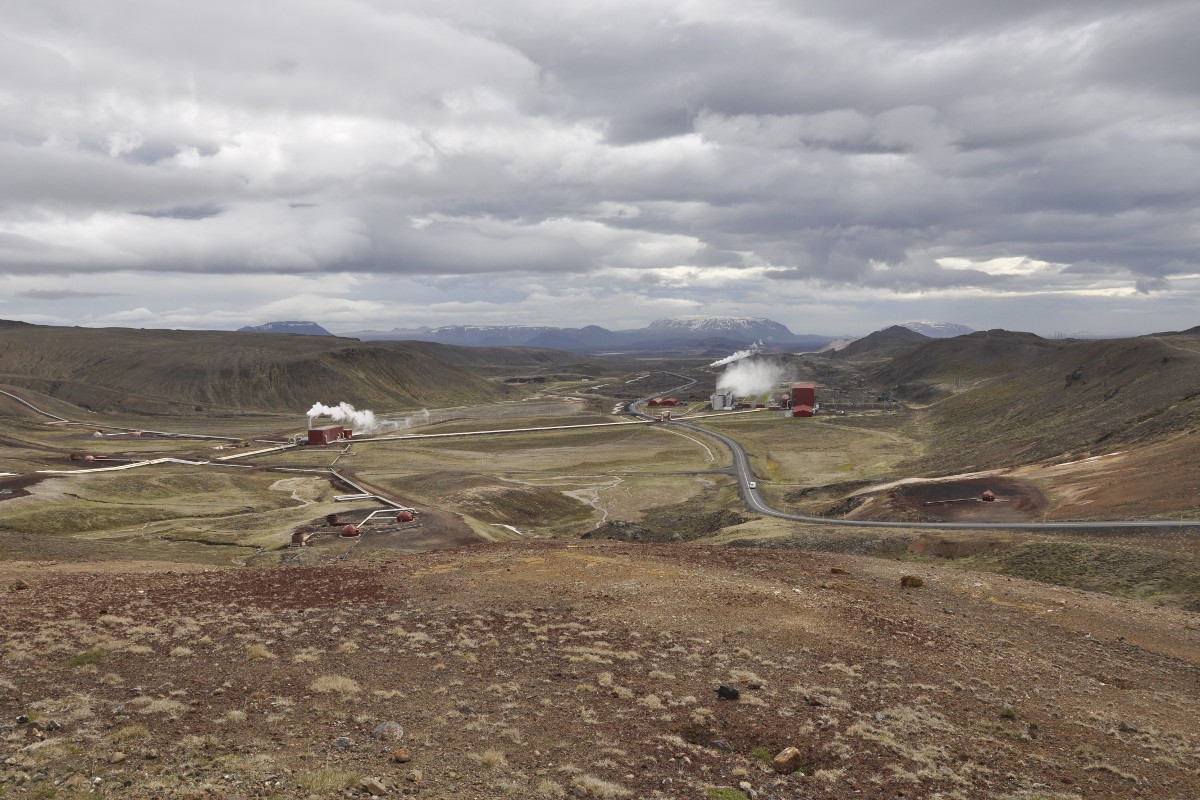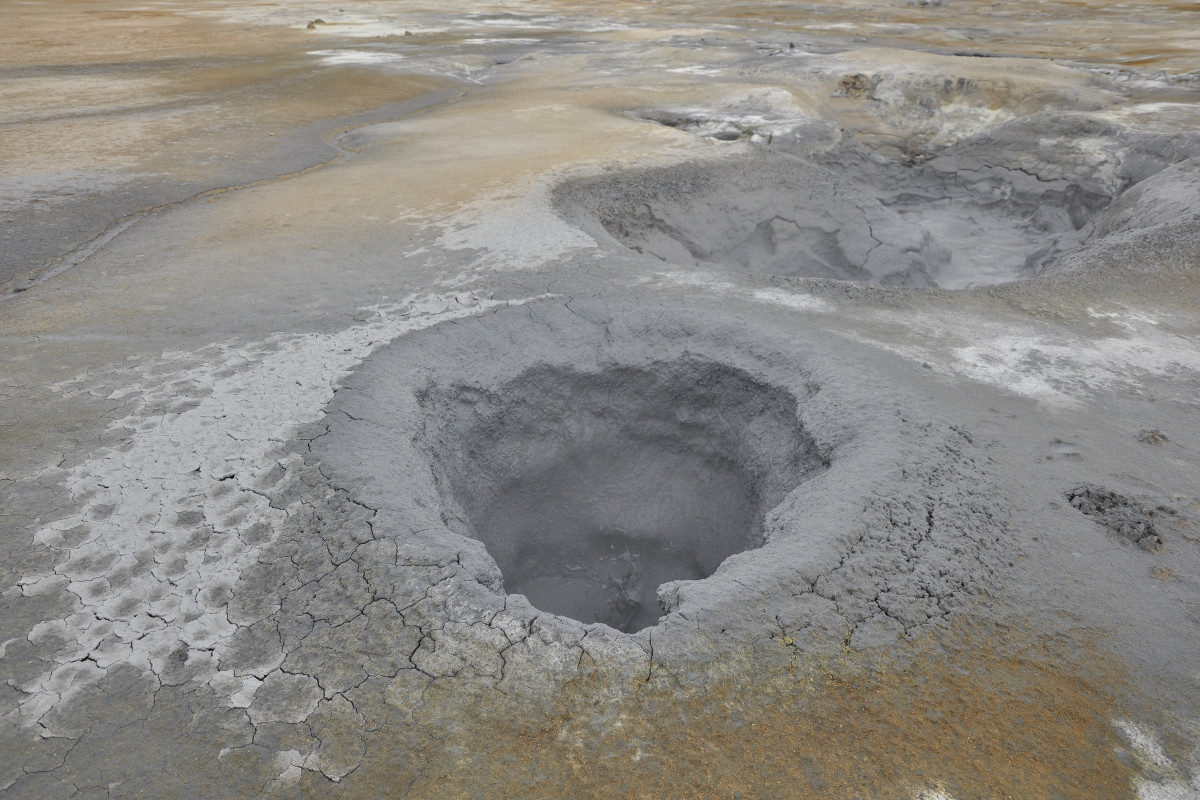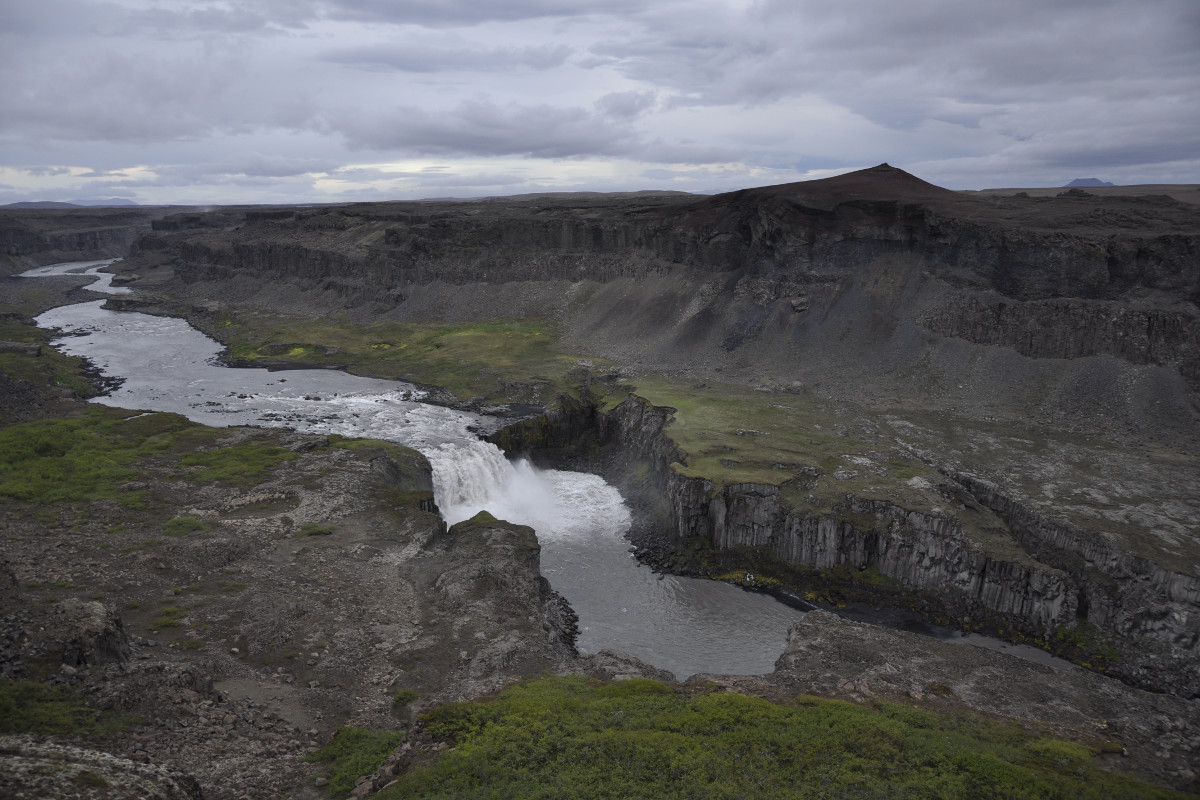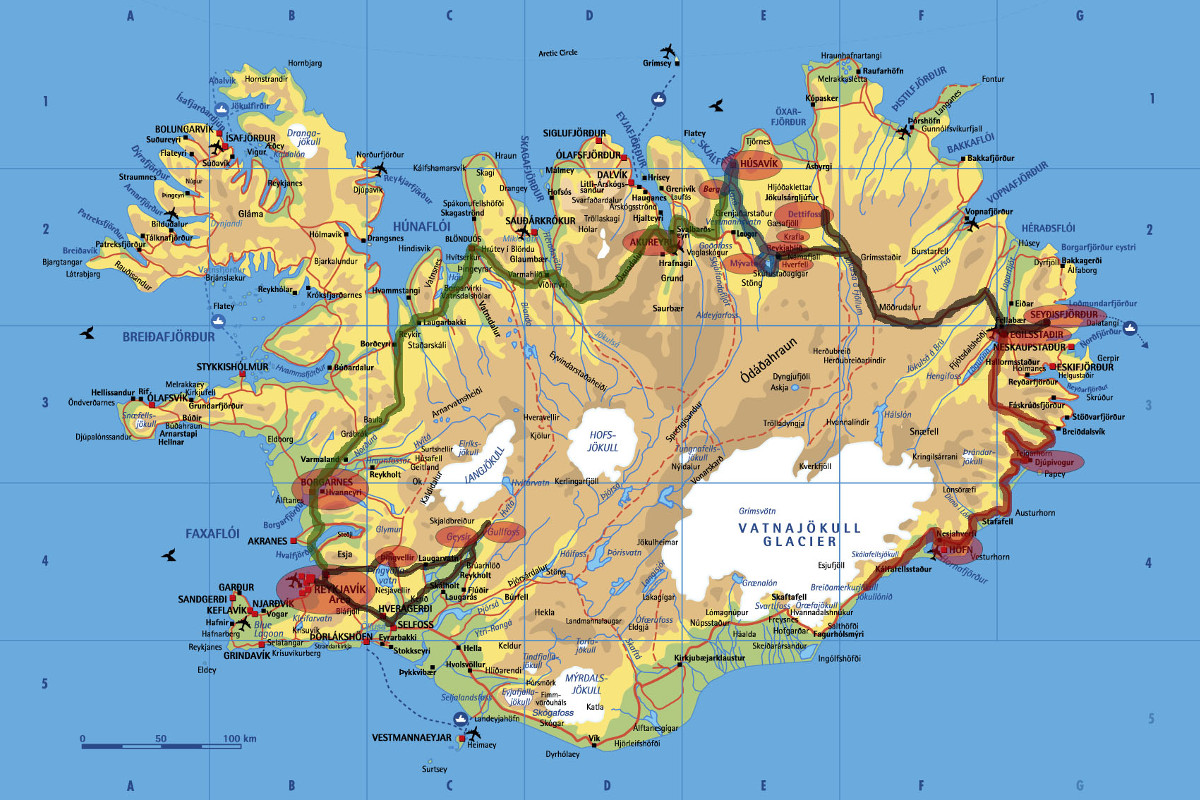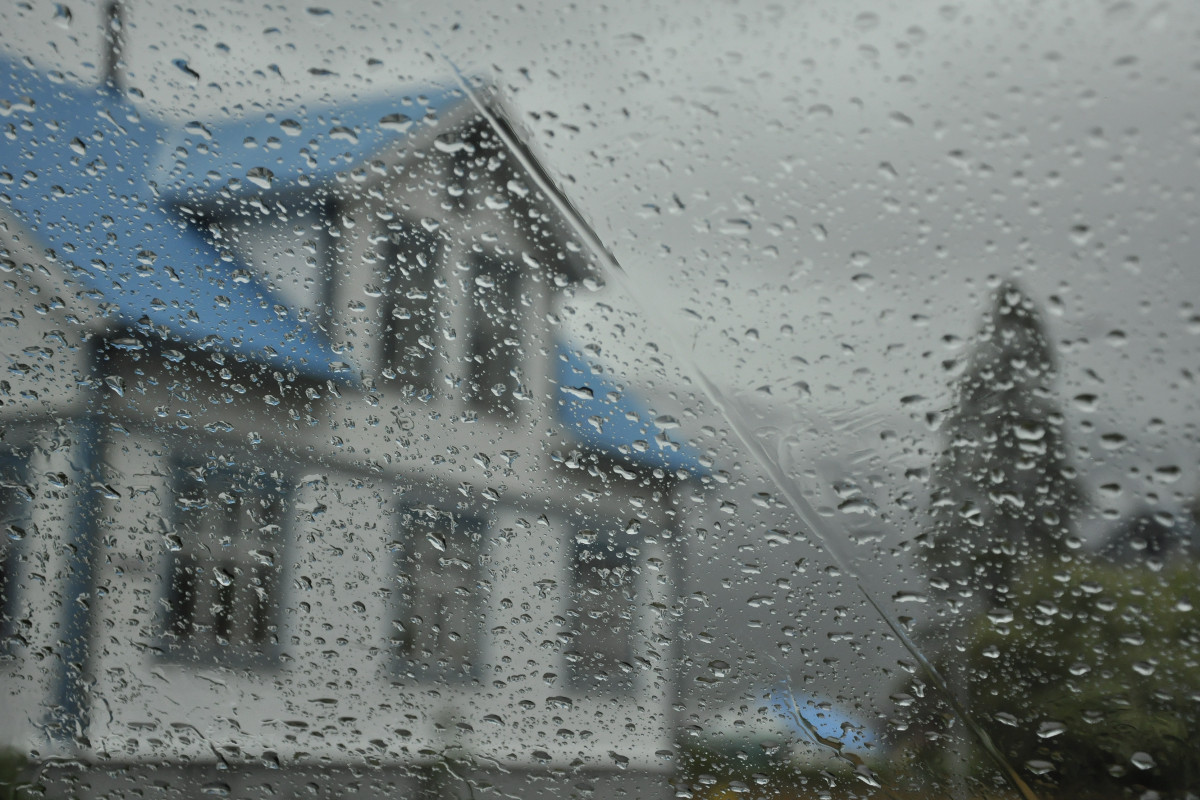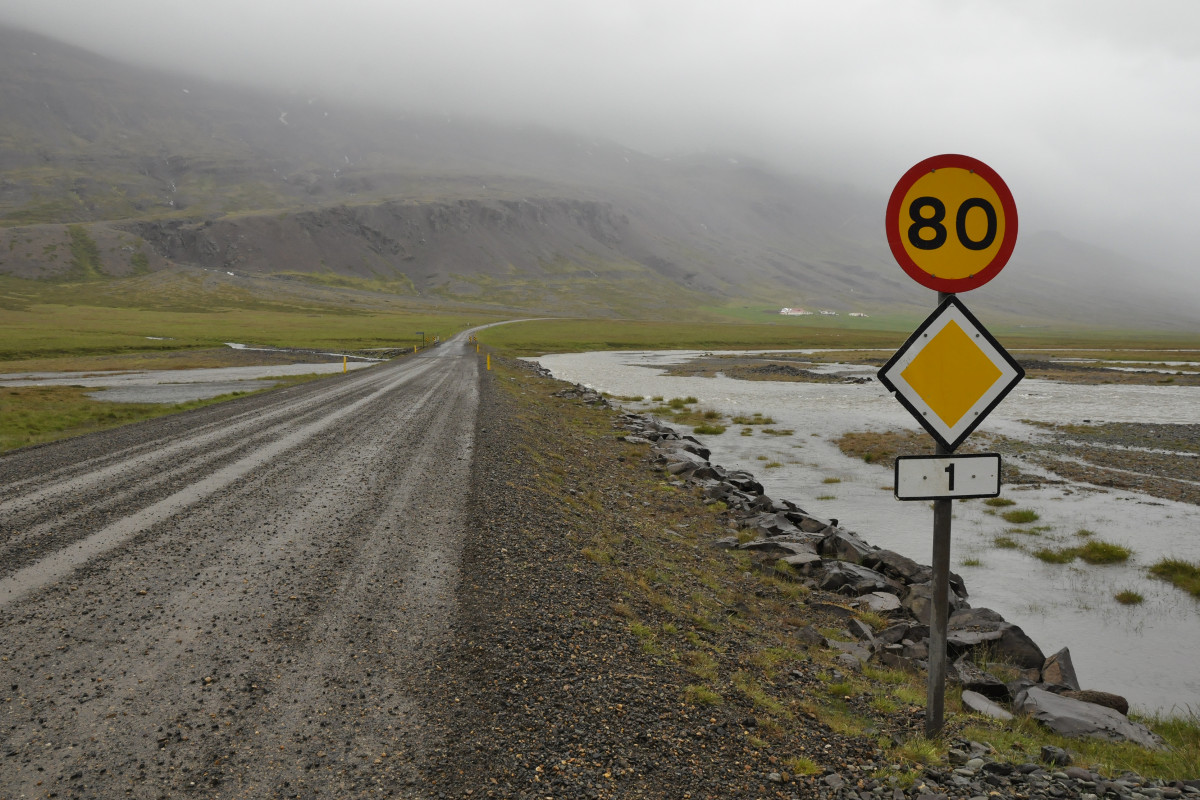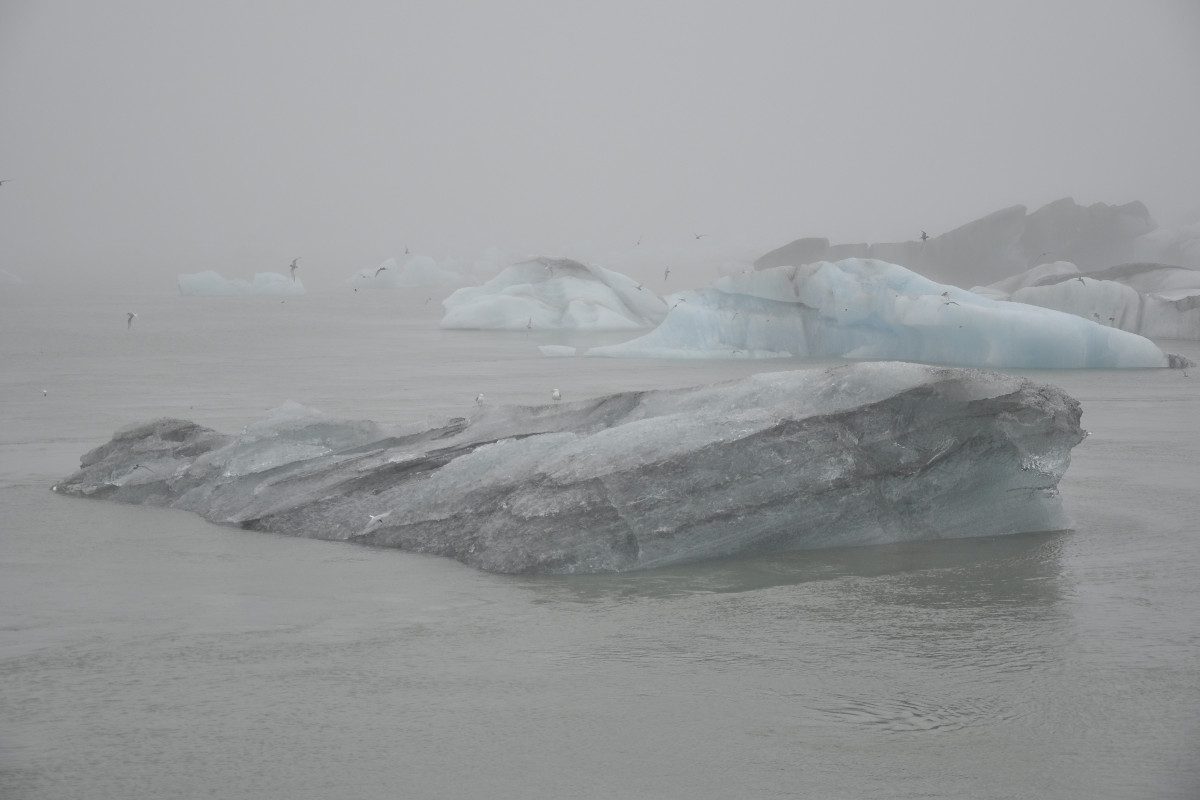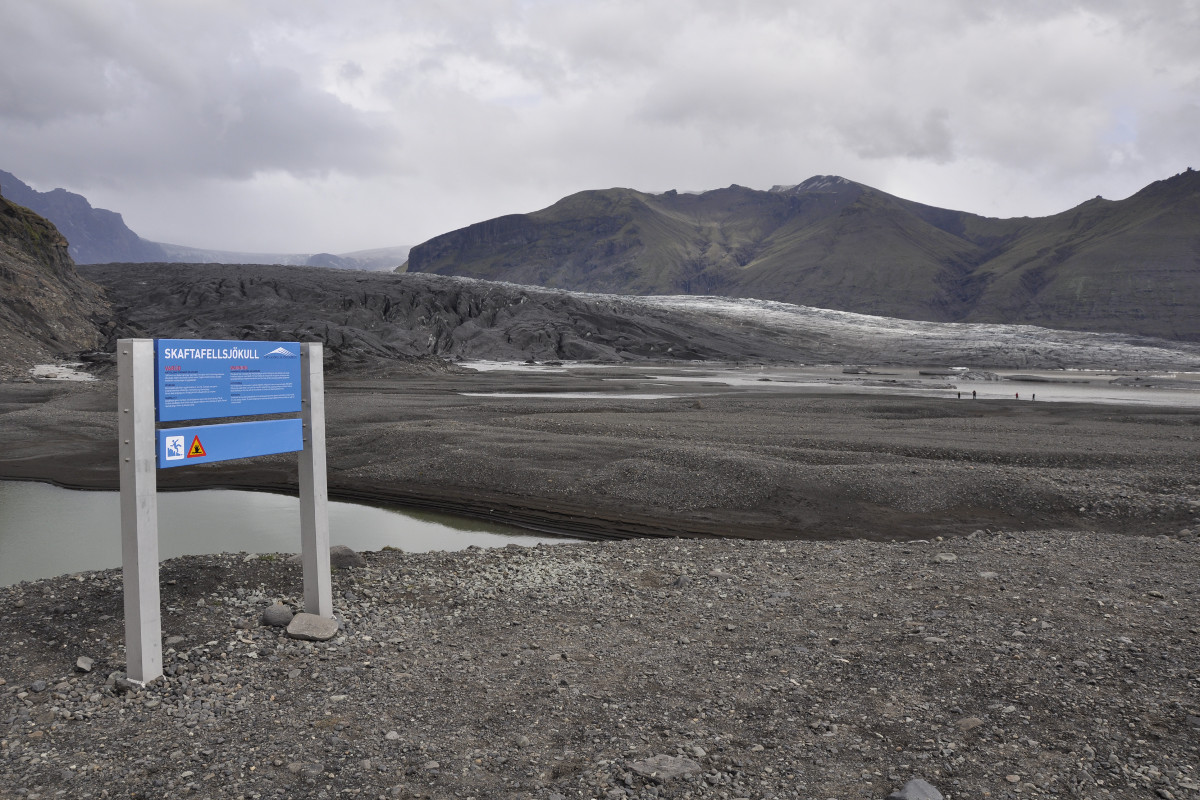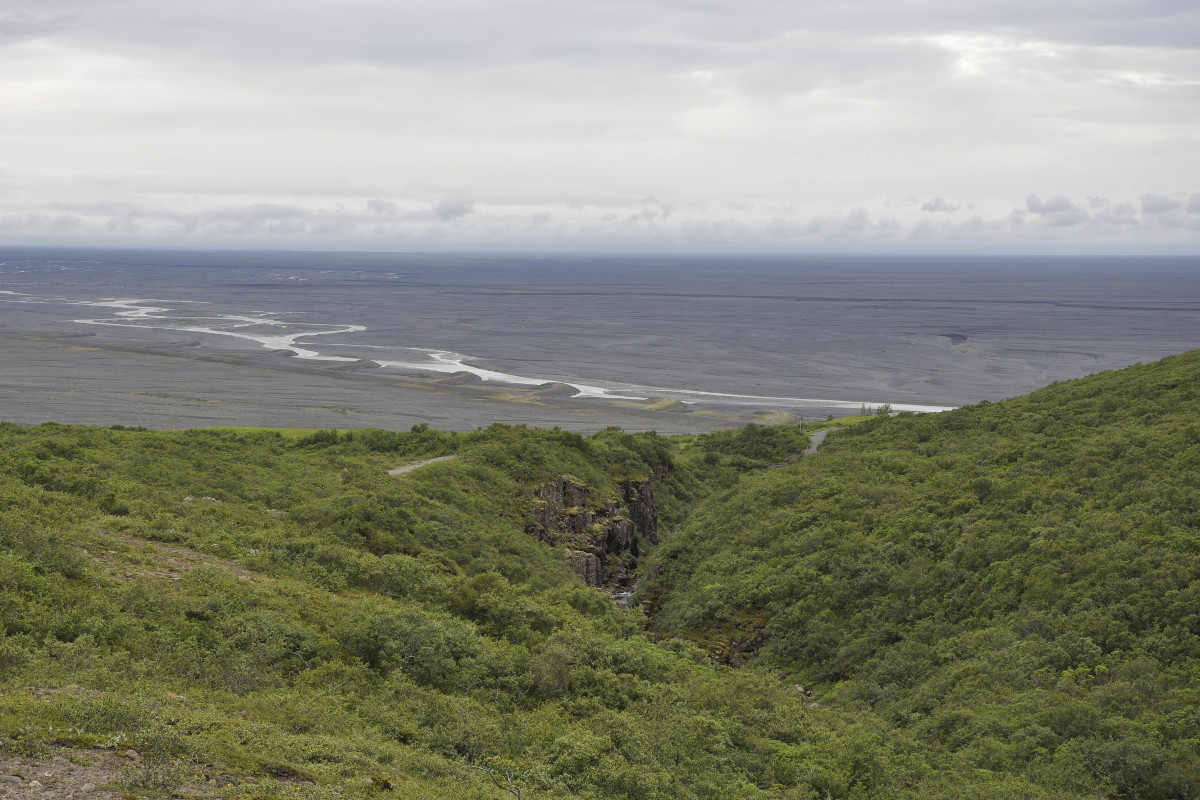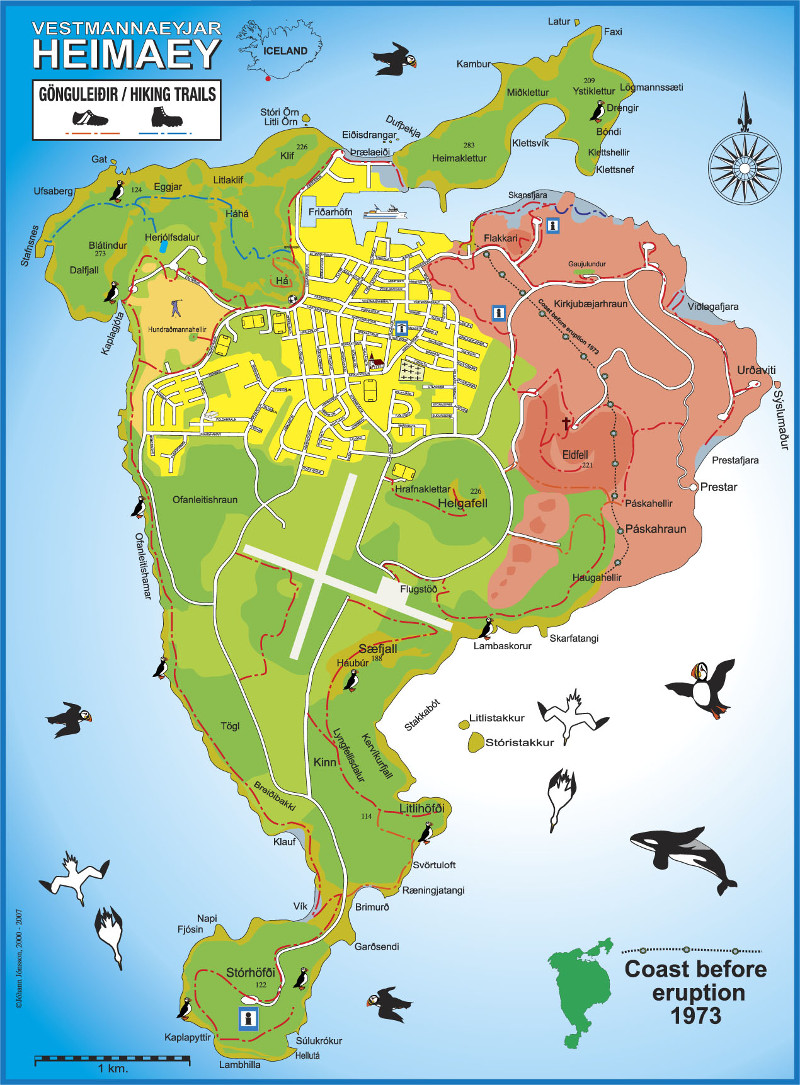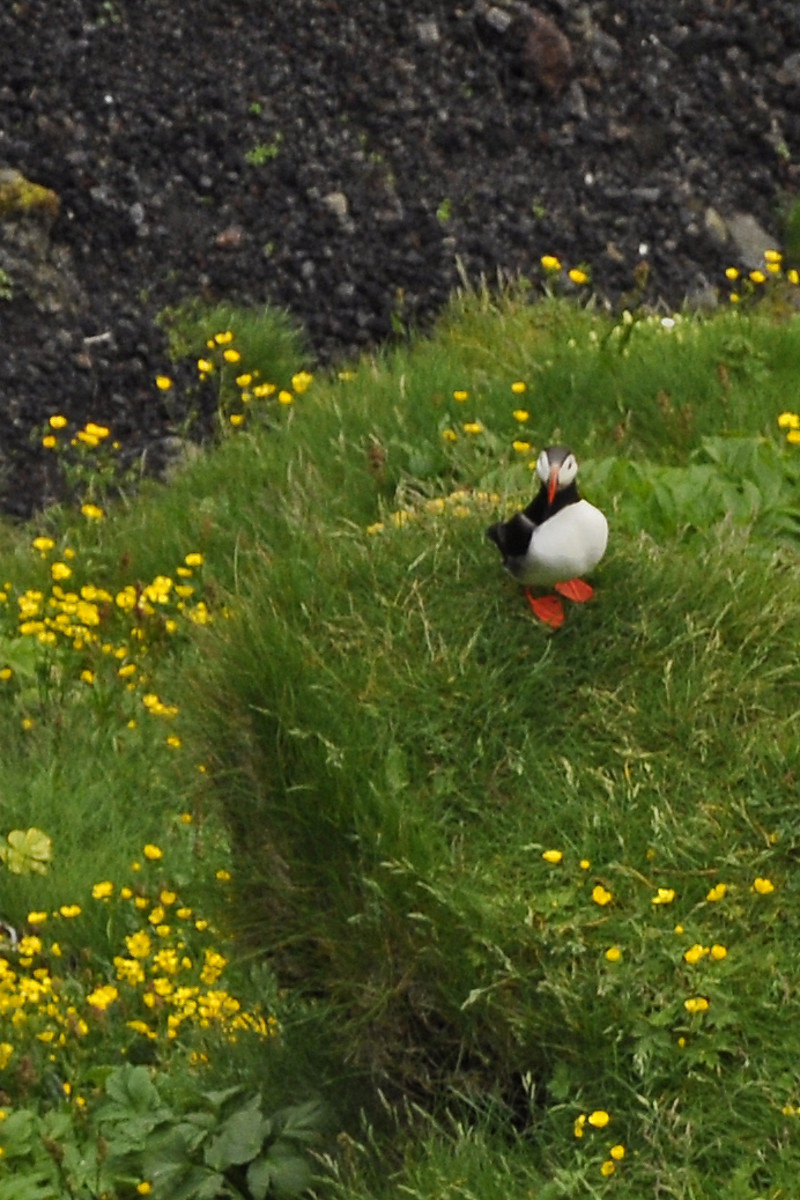Through the frosty plane windows, the scenes that I had cultivated intensely in my mind in the previous months began to materialize: the largest glacier in Europe, from which hundreds of rivers flow into the sea along the rim of the black sandy desert, lava fields, rocky fjords and winding roads... When we left the airport building in Keflavik, the absolute euphoria subsided a little, because at the moment we were hit by the kind of wind that can be felt in our regions only when climbing one of the mountain peaks before dawn. This wind is a common occurrence here, and since it is not visible in the pictures, it can surprise an enthusiastic and excited traveler who plans to pitch his humble tent - which would soon fly away despite a beautiful sunny day (which lasts 23 hours) in the direction of the land of Oz. Fortunately, after thinking it through, we did not bring the tent. Once again, our Lonely Planet guidebook was right. It said: "Are you sure your tent can withstand Icelandic weather?" So we decided on hostels and other solid-type accommodation. The temperature of ten degrees C and the angry northern winds had us dressed in winter jackets and hats in no time, which we didn't take off in the next ten days.
Nowhere in the world are the four elements more apparent than in Iceland. Bare earth, black deserts and green hills riddled with watersheds, with water in all three basic states wherever you turn: sea, rivers, hot springs, glaciers. There are volcanoes and lava at every corner, everything is fuming, while the wind blows clean and fresh air all over the island.
Reykjavik, in fact the only real city in Iceland and the northernmost capital in the world, was the start and end point of a well-designed route that is pretty intuitive if you take a look at the map: a circular (and actually the only) route that tours the whole of Iceland and passes in the vicinity of various wonders of nature. The landscapes seen through the window along the road aptly named "1" are truly unique: either indescribably colorful, or frighteningly wild and unusual. We made a stop every 10 minutes to see a glacier from a new angle, to offer a handful of fresh grass to a horse with a chic hairstyle or to the glittering white puffy sheep, to walk through the soft mossy meadow to a nearby waterfall, or to simply take a little nap below the volcano. And just when you think there couldn't possibly exist a nicer shot on this planet of ours (which of course made you stand in the middle of the road and take photos at least a dozen times, with various settings, just in case), a new, even nicer one will light up around a bend, also absolutely essential to photograph. All your usual plans and calculations quckly go down the drain, as everything here is extreme: 100 kilometers in Iceland is like 300 km somewhere else, day and night last for a couple of months, the air is the cleanest, the wind is the strongest, the sky is the bluest, the fog is the thickest, the sea is the richest in fish, the springs the hottest, the people the fairest, the night life the craziest, the cities the smallest ...
| So, what is there in Iceland?
Iceland is the only piece of land located right at the intersection of Eurasian and American tectonic plates. The island, of course, is volcanic and quite young, the Earth's crust here is half as thin as in other places, so the situation is roughly similar to what it was in other parts of the globe a few million years ago. Because of all this, eruptions are a regular occurrence, not only from existing volcanoes, but it sometimes happens that the earth splits and lava flows along cracks that are usually several meters wide and can be very long, measured in tens of kilometers. Thus new craters, volcanoes and even some new islands are formed. The last such major eruption, known as the Krafle Fire, was in 1975, near Lake Myvatn. On the other hand, the rains are frequent and the glaciers are melting, so springs, waterfalls and rivers abound. As the soil is loose and unpolluted, the water is filtered beautifully so that all springs are cristal clear. However, volcanic "reservoirs" (ie lava-filled caves) are immediately below the ground, so the water often springs to the surface quite hot and sulfuric. The Icelanders had a good idea to take this water everywhere, so that almost all cities, settlements and farms have hot running water and heating. There is so much water that even the streets in Reykjavik are warmed in winter (to avoid ice), and every village, even those of a couple hundred inhabitants, has at least one Olympic-size hot water pool! Therefore, when you open the faucet in Iceland, hot water starts flowing first, so you have to wait for it to cool down. Some hostels even have warnings to be patient so as not to rush with almost boiling water! On the other hand, this abundance of water and lava was used by the Icelanders to build special power plants, which are positioned just above the lava reservoirs mentioned above. The power plant is supplied with water from nearby sources, which in contact with the lava instantly gets converted to steam directed at the turbines - giving you almost free electricity! Considering the size of the Icelandic population, several such plants produce more than enough electricity, which is really cheap here. So, electricity and water are a-plenty! Considering that even food is no longer expensive, that in summer there is daylight around the clock, and that the landscapes are like something out of a dream, it's hard to think of anything else one would want. The idyll can only be spoiled by occasional spells or crazy weather. |
Foggy bay
Reykjavik is a place with a special vibe, a capital completely unique and atypical. On one side there are colorful houses, picturesque streets, an odd concrete church that looks like a rocket and a bunch of shops with various works of art... While on the other there are boulevards by the sea, unusual skyscrapers and the most modern concert and congress hall in the world, overlooking the lonely farms on the the slopes of the vast, dark-green Mount Esje. A city with a thousand faces and with only 200,000 inhabitants. There is a very limited number of factories and industries, as well as crowds, boring billboards and advertisements; instead of it you get a combination of nature, high technology and standard of living, with an abundance of hot water and clean air. Perfect!

The city is full of quirky corners, all teeming with creative moments, as Reykjavicans seem to love the arts - from music bands, to painting, to poetry and prose, to crazy architectural endeavors and pieces of applied art that can be seen in galleries with unusual trinkets, as well as on the walls of houses or in yards.
And when Friday roles in, the idyllic Reykjavik turns into a crazy place for night life. The best description was given by a journalist from Reykjavik Grapevine magazine: “I was scared. The first people to buy me a drink in Reykjavik took me out from 11pm until 11am. In those 12 hours, I entered five bars, consumed roughly $ 100 worth of alcohol (mind you, that is only seven beers), witnessed two separate fights, three people pass out onto their faces, two dozen or more people urinating in the most public areas imaginable, and even ten couples find love after less than five minutes of conversation each. "
After 2 days of wandering around the streets and suburbs of Reykjavik, we went to pick up the car that was our most frugal means of traveling around Iceland. At the outset, the friendly people from the car rental company told us that the cars were not insured in the southern part, where the far-famed and notorious volcanic dust winds up, which, given the wind intensity in those areas, can "sand" the car, and even the engine . Only the rain can completely neutralize this effect, so to our joke: “We will pray for the rain,” the man replied with a serious: “Pray hard!” However, we were not in the mood for the expensive extra insurance, so we sucked it up and took the responsibility, because after all, it is just dust. Fortunately, the friendly man in the car rental agency, seeing that we would not buy insurance for the whole Island, even though we are obviously intent on dragging ourselves through various wastelands, decided to give us a "free upgrade" - in fact, a small jeep at the cost of an ordinary small town car. It wasn't until we met the wild Icelandic roads that we realized how much the man had done for us!
Day One

For the introduction and to warm up the engine we decided to make a small circle, some four hundred kilometers around Reykjavik and three great Icelandic landmarks, known by the slightly clichéd name "The Golden Ring". First, we headed to the large Tingvelir National Park, located right at the intersection of European and American tectonic plates. Due to the constant shear of the soil, unusual gorges have emerged here, which are more like canyons, except that the river does not flow at the bottom, and they are widened by a few millimeters a year.
| Who lives in Iceland?
Icelanders are a pretty relaxed nation, known for their honesty. In fact, there is almost no crime, the police do not carry guns and are seldom seen in public places. When paying for the internet in a cyber cafe, there is a small bowl of coins next to the computer with a note saying "for each hour you start, put 200 kronor". And everyone does it. No one controls how much you gave, whether you paid, or whether you took anything out of the bowl. Hostel doors are generally always unlocked, although the hostels do not work 24 hours, so if you are late for check-in, you can stay in the common room until the hostel "opens". All attractions (geysers, national parks) are admission-free, and there are even fantastic free maps and brochures! People here live in harmony with nature, consider eruptions a normal natural occurrence, and even when the ashes flood or destroy their homes, they start from scratch again and make an even nicer house. Similar was the case when, after the great banking crisis, many lost all their savings: after the protests, they saw that there was no use and decided to start over. This is why Iceland is one of the most optimistic nations, with the longest working hours in Europe. There is no complaining, no croaking, no whining - this is what this wild country has taught them in order to survive. People, on the other hand, are pretty closed up, so we didn't make many acquaintances. The main place of socialization is the famous pools, always with warm, slightly sulfuric water and no chemicals. Icelanders adore their clean pools, which is why the only sure way to infuriate an Icelander is to enter the pool improperly bathed. That is why in each locker room, besides the showers (without curtains) there is a special sign which indicates exactly what parts of the body should be scrubbed with soap and without bathing suit, in front of the eyes of other swimmers (read: controller). After closing, everyone puts on a swimsuit and goes to enjoy the water and chat. Within the pool complexes, there are always small pools with benches and even hotter water, which are actually real "chat-pots" where people get engaged in lengthy discussions. Everybody goes to the pools, so maybe if you get lucky, you can chat with Bjork in some Reykjavik chat-pot! According to their character, Icelanders like to live in a rather isolated places, on their farms. These are huge family properties around which there are often no settlements for miles. The only real city is Reykjavik, and possibly Akureiri, while all the other towns are like service stations: one or two gas stations, a shop, a bank, a post office, a church, a library (Icelanders read a lot) and of course a swimming pool. One really cool thing is that there are no mosquitoes in Iceland at all! Due to the highly variable weather, Iceland and the Faroe Islands are the only places in the world where these annoying bloodsuckers cannot survive. In fact, there are not many other insects (except for some special species of flies), and in addition to horses, sheep, reindeer and some polar foxes and stray polar bears (which float on icebergs from Greenland and are eliminated by farmers shortly upon arrival) there are few other terrestrial animals, probably because there are almost no forests at all. But there are seas, rivers, lakes and rocks, so there are plenty of birds, fish, seals and whales! In addition, among these acoustic rocks, as early as 930 AD, chiefs from all over the country gathered for the first session of parliament, here called Althing. Thus Iceland became the first parliamentary republic in the world, and modern democracy has emerged here, in the gap between America and Europe... And it probably stayed there. Today, Althing has been relocated to Reykjavik, but it is still special. Like everything in Iceland, it is comparatively modest in size, without unnecessary waste and luxury. Indeed, why would a country of 300,000 people need a bigger parliament? |
After an hour or so of driving through glorious landscapes, we find ourselves in a beautiful meadow criss-crossed by paths, with clouds of sulfuric vapor. This plateau is home to unusual boiling watercourses, the most famous of which is The Great Geysir, actually the originator of their entire species. They are actually ponds of fantastic colors, boiling, bubbling and smelling of sulfur. However, when their water, which slowly sinks through the cracks back into the soil, reaches the lava reservoir, it immediately turns into steam, which, due to high pressure, expels the water upwards. The most active and accurate geyser is Strokur, which erupts every 6 to 10 minutes, and is up to 80 m high.


His Majesty The Great Geysir now looks more like a lake. It used to be the largest and most accurate of all, but tourists, eager to force it to erupt as soon as possible, threw stones and coins at it, so it was partially congested and disrupted its timing. The Geysir Geysir is still active, but completely unpredictable. Sometimes it does not go off all day, which is why all eyes are on Strokur. Until it suffocates too.
The more we go inland, the more we see white glaciers in the distance. In the middle of nowhere, with ample parking space, there is a tavern serving fine lamb stew. The trail behind takes us to Gullfoss, the largest waterfall in these parts! The water splashes all over, the rainbows shimmer and dance, and I am constantly wiping the lens of my camera, trying to take pictures of it all...

Beyond Gullfoss, the route leads north to completely uninhabited regions of the mountainous interior. The tarmac soon turns into a dusty dirt road, the beginning of the Kyolur route. Such wild, mountainous roads are marked “F”; they are passable only in summer, and even then it is impossible to drive there without well-equipped jeeps or special buses, especially since the creeks, which are found here at every turn, are often without any bridges. Landscapes looks like something from another planet, but we decide to return to the paved road that leads us back to Reykjavik. We hope to return to "F" roads one day, after we buy our own Lada Niva!
Day two

The next morning we left Reykjavik in clockwise direction, with the intention of returning to it from the other side, in exactly seven days. With views of the Snaefelsjokul, the volcano that Jules Verne's heroes Professor Lidenbrock and his sister Axel used as the entrance to the center of the Earth (the exit was the Stromboli volcano in Italy).

... and a little nap under some unknown volcano...

... we found ourselves in fantastic swampy meadows, where we wandered for hours looking for a waterfall...

... to finally get to Akureyri, the second largest Icelandic city, where after a snack and a walk around the center, we continued our journey across the fantastic mountains ...
 |
 |
... right to the Berg farm, actually the hostel, the best one we've ever been to.

The stay at this hostel was a true Icelandic experience: the farm is about 10 km from the road, located in a field of petrified lava, next to a large lake, a few kilometers from the sea. There is no populated area within 20 km; only sheep, horses and all kinds of birds. And at the same time, you have ultimate comfort! At one o'clock in the morning, before the sun was up, we hurried to see some strange birds. And then we realized that the sun here in the north does not really set at all, instead gliding slightly above the horizon ...
Day Three

Immediately in the morning, we hiked to nearby Husavik, a picturesque fishing town known for whaling in the sea around it. We sat on a boat, a former whaling vessel, now a whale-watcher, and after an hour of sailing around the bay and floating on the waves, we came across no less than a blue whale, the largest species in the world. It is an amazing feeling to hear this huge creature, whose heart is the size of a small car, swimming ten meters from the boat!
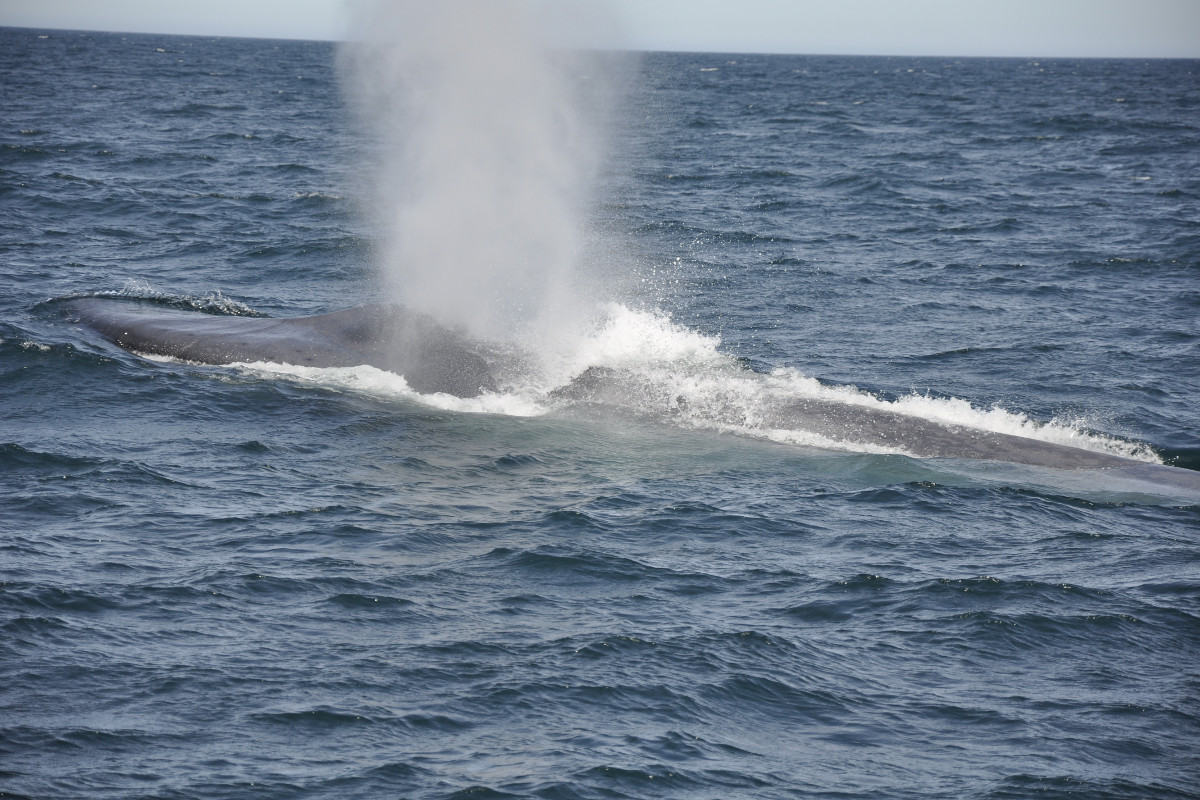
On a slightly worse road, we reach Mordor. I mean, Myvatn. This time, we find a little more modest but completely authentic accommodation option, in a hut next to the campsite, again on the perimeter of the petrified lava field and Lake Myvatn, which arose thousands of years ago, when a series of lava eruptions blocked the flow of the river. That was when the flies came here, the only insect colony in Iceland (Myvatn: my = fly, vatn = lake), and then the birds came to eat those flies, so Myvatn eventually became one of the largest bird sanctuaries in Europe.

And again we go for an evening stroll, or more precisely a white-night stroll, with a climb on the nearby tephra (sand crater). Real Moon-like landscapes, fantastic atmosphere, with plenty of unusual colors and wind that almost blew us away.

Day Four

The fourth day began with a bath. The temperature of the sapphire-blue water was almost 40 degrees centigrade, while outside it was barely ten. We are in the middle of black deserts. A fantastic experience, but you can't stand it for very long, as the water is too hot, and it's not comfortable sitting outside of it. After the hot water we headed straight to the Krafla power plant, where live lava and water can be seen creating electricity, with just 17 employees. Here, in the vicinity of Krafla volcano, lava reservoirs are quite close to the surface, so everything is warm, even mud. That's why there is Hverir, a whole field of small mud volcanoes, amazing colors and shapes, but also scents...

We continued our journey across the black-sand deserts. When we saw the quality of the road leading to Dettifoss Waterfall, we were absolutely delighted to have rented a jeep. And when we arrived, we were even more elated! Black canyon along which there are three waterfalls, the largest of which is Dettifoss. And again the colors, the water, the wild ... In this beauty and eternal day, man really loses his idea of time: it was only at midnight that we finally headed to the hostel in the eastern fjords, over 200 km away! The stretch of road we took is considered to be the most remote in Iceland - for the entire 50 km we did not see a single trace of life, nor encountered any cars.
 |
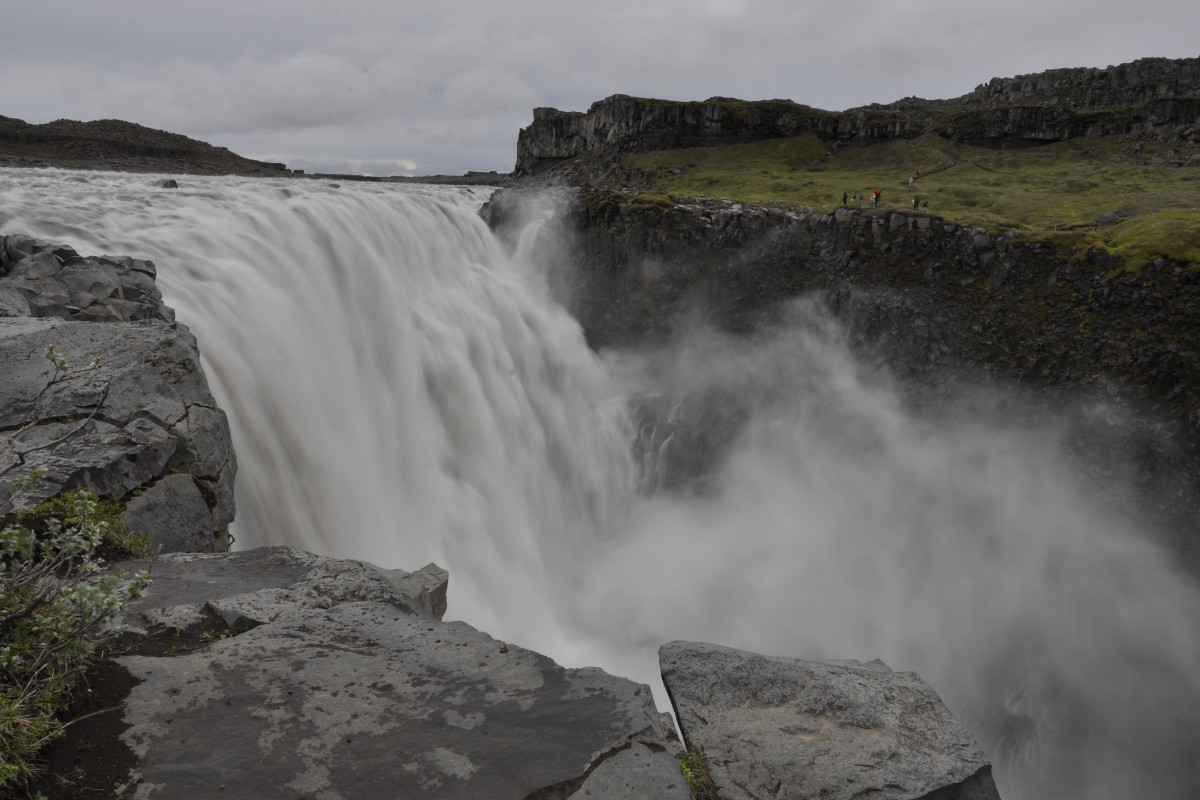 |
|
 |
||
Day Five

We arrived in Seyðisfjörður in the dead of the (white) night, across the incredible snowy mountains, in the rain. Fortunately, the owners of the hostel had just returned from the night out, slightly drunk, so they let us into our room. The small town is fantastic, nestled between the mountains and the sea, with a large port to which all ships from Europe arrive. We continued our journey through fog and rain, along the east coast... The end of a paved road in Iceland does not mean a decrease in speed at all, so on these roads one feels just wonderful when overtaken by a truck raining pebbles...

We spent the evening at another farm-hostel at the foot of Europe's largest glacier, Vatnajökull, hoping to see its white peaks in the morning instead of gray clouds. But the hostel owner did not share our meteorological taste. She was delighted with the rain because the grass would be greener and her sheep would not return home from grazing on a handful of hay. (Otherwise, sheep graze here all summer long on huge farms that run for miles around the farm, and return home only when the fresh grass runs out).
Day six

Morning was no better than the evening, so we stopped by the glacier lake Jokulsarlon (Jökulsárlón), where blue icebergs float around; during the shooting of James Bond Die Another Day two Aston Martins float there as well. How nice it would be if this damn rain finally stopped! And really, just around the corner, on the other side of the mountain, completely out of the blue - in true Icelandic fashion, the sun came out, improving our stay at Skaftafell National Park, where we went looking for a dirty glacier. In fact, we thought it was a hill, and it wasn't until we got closer that we realized it was ice, covered in thick black dust. Unexpectetly, glaciers turn out to be very lively places: everything is cracking, crunching, melting, liquid mud puddles appear - all in all, a longer hike without the right gear is practically impossible.

After that we headed in the other direction, towards the spectacular Svaritfoss waterfall, surrounded by basalt columns. And then, through the green hills, we could see why this southern part of Iceland was notorious for driving: between the mountains and the sea stretched a real desert of black sand and tiny volcanic dust, criss-crossed by hundreds of streams that flow into the sea. Nevertheless, when we got in the car and started driving down that road, we didn't care. The scenery was fantastic, but the road occasionally disappeared under the gusts of wind, reappearing under the veils of dust, which threatened to enter all pores of our uninsured engine, windows, bodywork... But luckily, it didn't! They say that sandstorms sometimes rise along this road such that visibility is basically zero. After this, we have started loving rain almost like that sheep-herding hostel owner!

Tens of kilometers after the desert - rainforest! Suddenly, the landscapes are incredibly green, there are waterfalls, pastures - real elves' land! No need to mention the waterfalls, as we have seen so many of them already. It seems that for every household in Iceland there is at least one waterfall, a few dozen meters high! Out in the distance we can make out the high glaciers, beneath which the most active volcanoes in the world ominously are squatting... Somewhere behind these hills, some three hundred years ago, 130 new craters and crevices opened, spouting lava, dust and toxic gases for eight months. Poisonous clouds, rains, long years without sun, and therefore without crops, killed almost 25% of the population, 80% of the sheep and 50% of the horses. This dust cloud also swept over Europe, in the period known as the Famine Years, believed to be one of the triggers for the French Revolution of 1789. Airline companies should be happy that in recent years, instead of the eerie Craters of Laki, only their benign neighbors, Eyjafjallajökull and Grimsvotn, erupted.
Since we got carried away as usual, taking pictures of new waterfalls and glaciers that surfaced along the way, we rushed ashore where the last ship to the Vestmannaeyjar, the last leg of our Icelandic journey, was already waiting.
We were greeted by fascinating rocks, a true northern harbor and the smell of fish - here the mackerel bite like crazy, best anywhere in the North Atlantic! That is why here, on the island of Heimaey, the largest and only inhabited area of the whole archipelago, there used to be a great town. And all that went nicely, until in the 1970s it occurred to the volcano to play the evil contractor and upgrade the island. One night in 1973, a new crater was opened near the town, which erupted continuously for 2 months and during that time enlarged the island by as much as 20%! Everyone was evacuated, the houses were covered with ash, and one would think that no one would ever come back here. But the faithful islanders returned as soon as the eruption ended, did a great deal of construction, and made their island even more beautiful (while the volcano made it bigger). The houses that were left in the rubble, buried under tons of ash, had not fallen into oblivion, because the villagers had erected the tombstones for them. Even archaeological excavations, known as the Pompeii of the North, have been launched, where some parts of the "old" city have been excavated and marked.
Day seven
It was in this particular cemetery, the next morning, that we began our stroll around the beautiful island, in search of an unusual bird that lives on huge rocky cliffs on the Atlantic coast. These birds are called Atlantic puffins, and this island is actually their summer resort, because only in July and August they come here to mate, after which they spend the winter in the open sea, who knows where. However, we traveled length and breadth of the island, saw fantastic landscapes, wild beaches, steep cliffs, cute sheep, tufted horses, various birds - but there was no sign or voice from the Atlantic puffin. And then we climbed some almost vertical cliffs, using the ropes set up here for similar enthusiasts - and we were rewarded multiple times! In addition to a flock of puffins, we enjoyed the midnight sunset 300 meters above the ocean, while on the other side, above the city and the whole island, a complete rainbow appeared in a reddish haze, in its full glory. If it was a postcard, you would say - kitsch, cliche, fake.
 |
||
 |
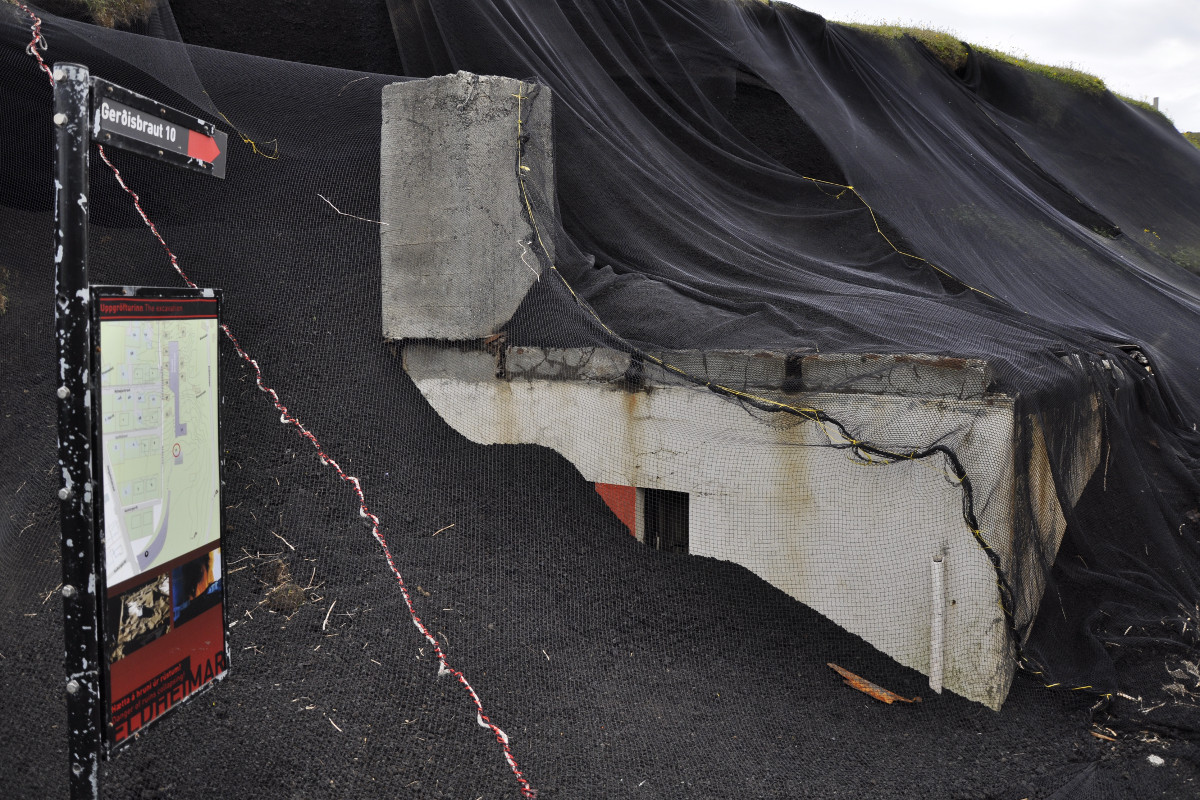 |
|
 |
 |
|
 |
 |
|
 |
||
| What do they eat in Iceland?
All the food in Iceland was great, starting with a variety of pastries and sandwiches from the bakery, with special reference to the special juicy and extra-chocolate Icelandic donut (kleina), to the typical, extra-healthy yogurt-like beverage (Icelandic skyr), to protein-rich and somewhat too aromatic dried cod. However, it is a less pleasant experience to see half a sheep's head in the plate, together with the eyes, ears and teeth, or a couple of ram's testicles. In addition to these "specialties", there is another cool culinary taboo, which is hakarl, or fermented and dried Greenland shark. This type of shark has no kidneys, so its flesh is full of ammonia, which makes it indigestible and disgusting. Therefore, it is necessary to process it beforehand in order to make it edible. One of the easier ways is to just bury the shark in the ground and wait a few months for it to rote (according to some stories, you should even urinate on the ground from time to time), making the meat easier to digest but even more smelly. A more sophisticated way is special smoking, a skill possessed by only a handful of experts from the west of Island, which raises the price quite a bit. But when you think about it, the question is - why would anyone even bother to prepare this inedible fish? In fact, the Greenland shark eats mackerel, and mackerel are most hunted in Iceland, so this tasteless shark often ends up in the nets. As it is a common understanding in the fishing culture that the catch must be used in its entirety, Icelanders made every effort to make this shark edible. And so hakarl, presented to tourists as a specialty, is really just a necessary evil. Old Icelandic fishermen must be secretly smiling, looking at the faces of curious newcomers chewing on the hard meat of the Greenland shark. |
Day eight

In the morning we headed back to the ship, and then back to our little red jeep waiting for us at the dock. Soon the eastern parts of Reykjavik began to loom, and the circle closed. All we have left to do is take a peek at the most famous and blue water in Iceland - the Blue Lagoon.

The lagoon is beautiful indeed, but after all the incredible scenery and wildlife, the place seemed a bit too commercial, with expensive tickets and crowds of American tourists. It was about time for something in Iceland to be overrated! We glanced from the plane down to the south shore, behind which a still unexplored inland loomed. We realized that we had just made one circle, barely touching the perimeter of this icy island! We should come back another time...
